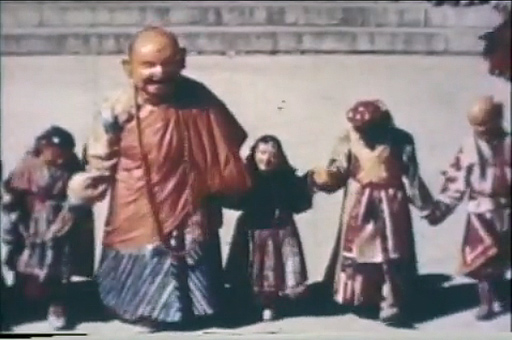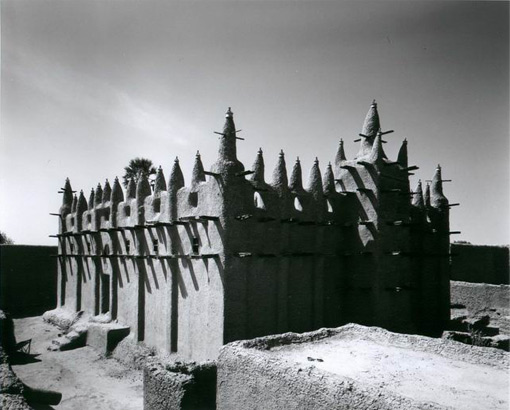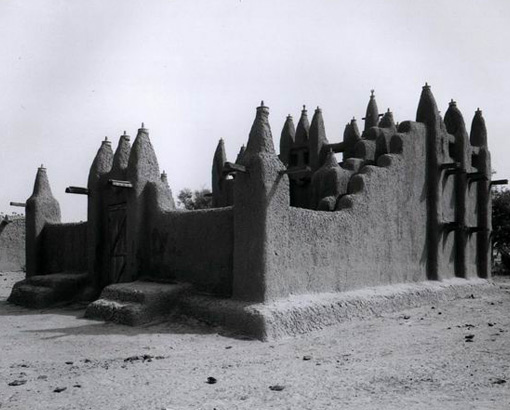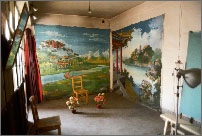February 8, 2011
Tibet in 1942
The National Archives have released a film (in color) of the OSS visiting Tibet in 1942. The scenes approaching Lhasa are especially spectacular if you've been there any time in the last 20 years.
More background on the film can be found at the National Archives.
The grandfather of an acquaintance of mine was on one of these OSS trips and ended leaving his American wife (the grandmother of my friend) for a Tibetan woman — that's the story I want to hear.
(via metafilter)
February 21, 2009
Typology of People in Central American Beach Towns
I'm going to start with:
Guys who look like Kenny Rodgers
Guys who look like pirates
Guys who look like Kenny Rodgers trying to look like a pirate...
to be continued...
July 12, 2008
Eric Newby on Meeting Thesiger
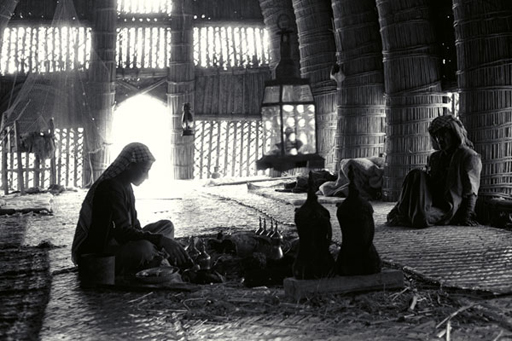
When I was a teenager my heros were great travellers like Eric Newby and Sir Wilfred Thesiger. The Guardian has a short account by Eric Newby of meeting Thesiger on the road. Jeremy Sutton-Hibbert who pointed to this link also provides his own account of meeting Thesiger as well as many good links.
Related: Eric Newby
May 15, 2008
On the Earthquake
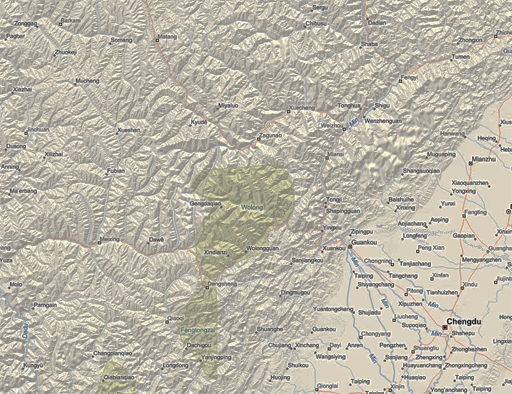
The city of Wenchuan where the recent earthquake in China was centered lies only a few miles away from the Longmenshan fault. The fault severs Sichuan province on the diagonal cutting it roughly in half. From ground the land to the east of the fault appears flat, but if you fly above it, you will see the earth slopes down into a huge basin (geologists call this the Sichuan Basin). On the other side of the fault, to the west, the land immediately deforms and flatlands quickly become foothills and foothills abruptly become an imposing labyrinth of impossibly high mountains and deep river valleys.
Until about 40 years ago the city of Wenchuan was one of the last major Chinese outposts before getting into the serious mountains. It’s lies at 4347 feet above sea level. Respectable, but a drive up the road you start hitting passes that are at 15,000 feet, then 17,000 feet...a day up the road you hit a 19,000 foot pass and those are the passes, the low spots between the mountains. The landscape is beyond human scale. For hundreds of years this was were where China effectively ended. Beyond were various kingdoms and fiefdoms of tribal peoples such as the Miao, the Naxi, the Qiang, the Yi, the Lisu and the many tribes of people we now group under the title Tibetans. Chinese mythology is full of stories of the mountains being the home to demons and spirits and in many old Chinese maps these mountains and the imposing deserts to the north of them represent the ends of the earth. The people in the mountains spoke foreign languages, practiced a foreign religion, and were ethnically distinct from the Chinese.
Mao Zedong made a conscious decision to take control of Sichuan's mountains, as well as Tibet’s 3 primary kingdoms. This area represented to him, and to the majority of Chinese today, part of that country's manifest destiny. Mao's government sent tens of thousands of Chinese up into the highlands as part of an organized "education and cultural assimilation" campaign both to teach city people the value of manual labor and to bring Chinese culture to the region. Local culture was systematically destroyed, monasteries were blown up, local religion and language were banned, and small villages were turned into Chinese cities. Living standards for many improved, but at the cost of their cultural heritage. Instead of small self sustaining organic communities living in symbiosis with the land the Chinese built medium sized cities often on grids, they dammed the rivers and relied almost exclusively on imports from hundreds of miles away to feed and cloth the people of those cities. Today there is hardly a city in the region without a majority Chinese population and in most cities vernacular architecture and customs are rapidly being erased.
As the land in these areas is so steep and harsh, most cities lie in deep river valleys. Because flat land is at a premium cities are often spread out over the thin strip of land on both sides of river bottoms. There are hundreds of rivers as this is China’s watershed and up every river and tributary you will often find a town or two. For the most part, dams have tamed these rivers providing power and most cities are connected by roads to the outside world. But these are tenuous connections. Most cities often only have a single road that passes through and connections to other cities and the outside world have to pass through some of the most rugged landscape in the world. Still, bit by bit, the Chinese have tried to take control of the landscape. Twenty years ago a bus ride to Wenchuan from the mega-city of Chengdu was a 14 hour ordeal. Today there are major highways with many tunnels cutting through mountains and the trip only takes about 3 hours or at least it did before the earthquake struck.
Beyond Wenchuan the mountain roads get narrower and even in the best of times have to be cleared regularly of debris from almost daily rockslides and washouts. Virtually all of western Sichuan as well as the provinces further north and west were recently closed due to riots. The riots in which ethnic Tibetans revolted against Chinese authorities and Chinese setters were the result of years marginalization, a kind of soft apartheid in which non-Chinese speaking locals are inexorably losing control of their historical homeland. The protests (and the crackdown in response) have been going on for months now in an area twice the size of Texas which has been almost completely cut off from reporters and travelers (Nicholas Kristoff managed to get in a rare report from the region in today’s NY TImes) The largest roads into this area run through Sichuan and right now apparently those roads are closed which makes the isolation even more complete. In addition to destroying roads homes and schools, the earthquake damaged hundreds of tunnels, bridges, and dams.
Looking at the images coming out of China I’m of course horrified by the destruction and loss of life wrought by the earthquake, in fact I worry that the actual death toll is much much higher than officially reported. The mountains are full of small towns and in village after village local Chinese governments have had habit of bulldozing indigenous architecture and erecting Chinese style concrete apartment buildings. While sometimes the buildings will have a locally inspired fillip as a nod to the tourists they tend to essentially be cheap concrete boxes, constructed fast and dirty. Judging from the pictures of the disaster it is these structures which have failed so dramatically turning entire cities into rubble. Many of those cities will be totally cut of for some time. Traditional villages in this area were even 15 years ago much smaller, one story affairs often built of wood and less susceptible to catastrophe than concrete apartment blocks perched on steep mountain ledges and at the bottom of deep river canyons.
My suspicion and fear is that the government will use the the world’s sympathy for the quake victims and rightful admiration for the heroics of the People’s Liberation Army whose soldiers working under the worst of conditions to detract from the harsh crackdown on Tibetans in the region. I suspect it will take years to find out what has really happened inland from to epicenter to tribal communities devastated by this this quake. My hope is that the quake will give the government in Beijing pause about overdevelopment in a region so inherently fragile where life has always been tenuous. Perhaps they will even take lessons from the indigenous people who have managed to live in harmony with this harsh environment for centuries rather than taking on the Sisyphean task of rebuilding and controlling the uncontrollable.
October 18, 2007
Servant of the Sahibs: A Book to Be Read Aloud
Over the years I've put together a pretty good little collection of late 19th century and early 20th century Tibet/Himalayan exploration literature. For years these books have been tucked away in boxes in the attic, but with our recent move I’ve finally had a chance to put the collection together on the shelf. Tonight I unpacked a book called Servant of the Sahibs by Rassul Galwan. It’s one of my favorites-a the dairy of a Ladakhi Muslim guide whose many adventures included a trip from Leh to Yarkland with the legendary Sir Francis Younghusband. The book was published in 1924 and recounts travels spanning 30 years.
Some excerpts:
There were much rocks and darkness and the rain made mud. We fell into unluck that night.Now I said to these lie-men. "Please tell true, how lost those ponies." They said: "You had charge in our hands. We went a little sleep. Then we looked to ponies, and we lost that place, at what place the ponies had grazing. Therefore we waked you." Now there were many up and down places where I could not get. Now from midnight we searched until morning which had little light. We had traveled wrong way the half-night. These men make bad luck. Head hurting mad.
...
Now my first wife I had not liked very much. That my mother knew. Yet she was not so bad, and after her death I remembered her much. And my mother said to me: "You must look very careful for next marriage." I said, "Yes mother, and I like that kind of wife who will obey, you the same as myself." Mother said, "You will teach her"One day my mother said at breakfast to that woman who cooked for us: "Do you know any girl, outside Leh town which Rassul would like and who would obey me?" That woman answered "At Shushat village there is a beautiful honest girl and she will obey you." When I heard that from that woman, I liked that girl without seeing. I said to my mother, "I like this one." My mother said "Without looking, how can you like? No good. Before marry you must look."
I said to my mother again, "This one, whatever kind of girl, I like her, you must send word to her mother and brothers. In a few days my mother sent words, and some tea and butter. Then came the relay that they like to give me their daugher. And I heard my wife had liked me, without seeing. I was much glad with this news.
...
The writer takes up his pen again, after that long interval of war. I have lost my art. I am not much remember where was much happy. All that, not remember. The difficult and hard place are good remember. And the youth-time remember were very good. In the old-time is not good remember as youth. Anyway I am written with very careful. Not got any wrong, though I had no learning besides travel.
August 18, 2007
Cambodia, 1992
From an old journal on this date:
Was advised against train travel because the tracks are regularly bombed.Opted for the bus instead.
Bus stuck in mud for 6 hours near Kempong Thum.
Lunch was a surprisingly delicious soup made with an unclassifiable meat, cilantro, and chilis.
At around 8PM the bus stopped and was boarded by 4 masked men carrying guns. Actually one boarded, 3 were outside. One of the gunman, a kid—he couldn't have been more than 16—shouted something and everyone ducked down in their seats or went down to the floor. I was left sitting there like a jackass. He smiled at me and pointed his finger down. I went down to the floor as best I could hugging my backpack. He was looking for someone. Robbed the bus driver. Rattled the hell out of everyone else.
Ended the night very late near Phlouk. No electric. Totally pitch black. Bugs. Sleeping in one of those big platform houses. All the men are on one side women are on the other. We all have little mats on the floor protected with mosquito nets that hang from the rafters. I'm being urged to shut off my flashlight.
--
4:54am Woke up in the inky dark to a a woman's blood curdling screams. Then everyone started screaming. Men turned on their lighters. Quite a scene with all the yelling and shadows dancing all around.
A giant snake had fallen from the rafters onto a pregnant woman's mosquito net getting itself (and the woman) trapped. The bus driver clubbed the snake to death with a stick. Everyone laughed when they discovered it was just a snake (I was sure the screamer was being murdered...). The snake, conservatively 70 pounds, is being cut up to be eaten for breakfast. Everyone is in an oddly good mood. Even the woman is sort of jolly/teary.
Bus departs at 6 sharp. Wondering if I should have taken the train.
July 20, 2007
Untold Stories
A blog reader from Vancouver named Jarret asks if any of the places I've traveled haunt me.
I am not so much haunted by the places I've stopped along the way, but rather the ones passed by, the places seen through dirty bus windows for only a few moments before turning the bend: the mountain village not found on maps, the lone figure in the empty landscape, the destroyed house reeking of death. Part of it is knowing the stories are unknowable. Part of it is knowing you will never return. Part of it is the regret for not stopping to find out more. Those are the places that come to me at odd hours of the night.
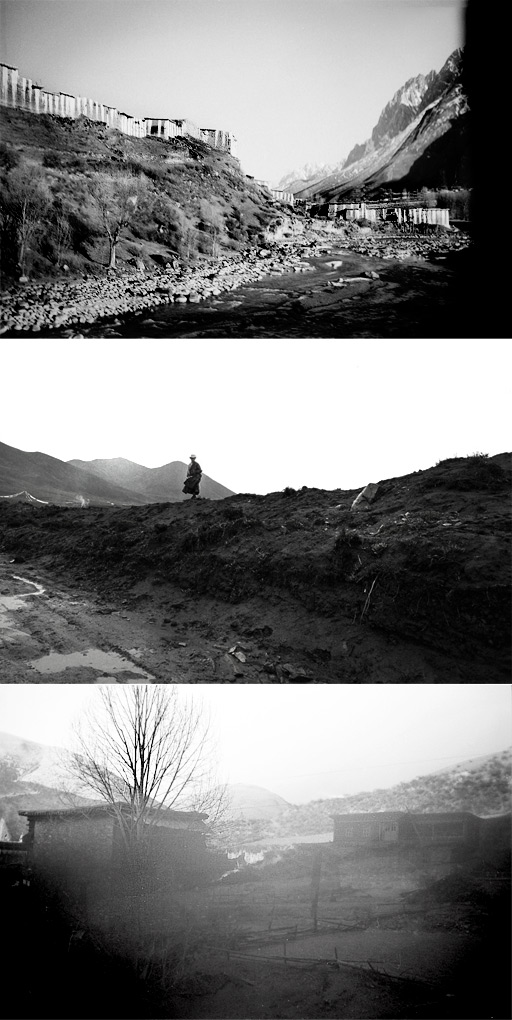
April 30, 2007
The White Bicycle Plan or Why I Love the Dutch
Here's what you need to know about the Dutch: they still believe in the white bicycle plan. In 1964 a group an anarchist group Provo put out a magazine outlining the white bicycle plan. The idea was simple. The center of Amsterdam would be closed to traffic and the city sprinkle 20,000 white bicycles around the city. You would ride a bicycle whenever you needed one, stop wherever you needed to stop, and leave the bicycle in place. Then someone else could use it. ...and so on and so on. Broken bicycles would be flagged and fixed by authorities. It would be good for the environment and you would never have to worry about locking up a bicycle or having one stolen or broken.
The group kick started the plan by distributing 50 white bicycles which were promptly removed by the police who claimed they would encourage theft, ignoring Provo's arguments that bikes without owners could not be stolen. While the plan never got started in Amsterdam, it has been resurrected many times over the years in smaller cities and each time the plan ends the same way, the bicycles are stolen and repainted, often within days, but the Dutch are undeterred. "It could work," a serious looking student told me today, the problem is they never bought enough bicycles." Another student chimed in, "Yes. Of course it will work we just need to think bigger."
addendum: In 1967 Provo announced the white corpse plan for automobile drivers who kill pedestrians: "Whenever the monster strikes anywhere in Amsterdam and someone is flattened against the merciless asphalt, the police must trace the victim's outline on the ground with a piece of chalk. As soon as an ambulance has removed the sad remains, the murderer himself, using a chisel and hammer, must hack out the silhouette of his victim one inch deep in the asphalt, under supervision of the police. Next he will fill the hollow with white mortar. Then perhaps, all the prospective murderers approaching the scene of the disaster will let up on the gas for just a moment".
April 28, 2007
Amsterdam
I'm headed to Amsterdam for a couple of days. I know the city fairly well and have visited all the normal museum type places. I'm always looking for suggestions of offbeat things to do, great places to eat, etcetera ...
I'm also looking for names of Dutch photo galleries to check out...
I know there are quite a few Dutch readers so if anyone wants to hang out and hoist a pils just drop me a line at raul @ [mexicanpictures] .com, IM at donleoxii, or hit me on twitter (themexican).
April 26, 2007
Camera Obscura
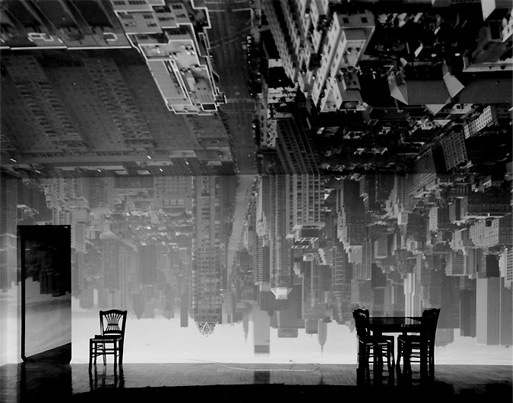
One of the great evocative travel experiences of my life happened in a dingy windowless room in a Rajastani guesthouse. I was bed-ridden with both dysentery and giardia and had not been outside in two or three days. I wanted to change rooms but was literally too weak to move. There were a tiny pinholes in the wall letting in shafts of light and a dim 5 watt bulb overhead which only worked a few hours a day. Hours were spent watching the ceiling fan circle ever slowly around and around and killing flies... so many flies. The nights were absolute black which was actually a relief as even the flies would stop buzzing.
One morning (at least I think it was morning as time had little meaning in there), when I awoke I noticed a dim but unmistakable image projected on the opposing wall... actually several images. There was the inverted village and the red hills, a tree with a swing, the train... dusty blue skies and clouds... The pinholes in the wall were turning the room into a natural camera obscura... They had been there all along but I had been too sick to notice. It is hard to express what comfort those images gave me and I think they were the boost I needed to get well enough to get out of there. I've never seen the camera obscura phenomena in any room since, although I've often dreamed turning a room of our house into one for a while.
I was thinking of those days in Rajasthan today which led me to revisit the work of Abelardo Morell the great creator of roomsized camera obscuras... His work is a reminder all rooms have secret lives as silent witnesses not only of the comings and goings inside but of the world beyond... and this is as true in the great rooms of New York City as it is in some miserable flyblown guesthouse on the Udaipur to Jodhpur railway line.
Related: a camera obscura fan site, Wifi Camera Obscura, Did Vermeer use a camera obscura?
April 13, 2007
Mud Mosques of Mali
One of my long standing travel goals is to wander the back roads of Mali seeking out local mud mosques which have come to me in my dreams since I first saw them in an Encyclopedia Britannica when I was a kid.
While the great mosque at Djenne would of course be on the itinerary, I'm most fascinated by the small village mosques which are so simple and evocative. I can't imagine when I'll get a chance to go being a father of two and all, but I'll get there. It's one of those things I just know.
February 2, 2007
Where to go?
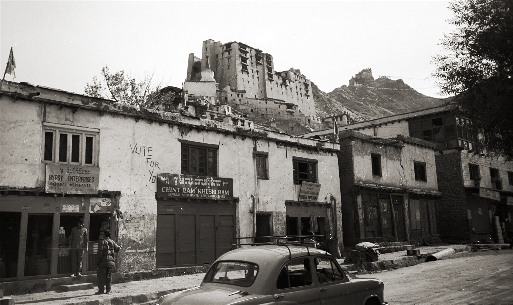
Blog reader Paul from Madison Wisconson asks, "If you could go anywhere in the world right now. Where would you go? Your budget is $1600. This is really a way of asking where should I go. I want to travel to the type of places you've been and I want to travel around for about a month. I'm into mountains but not mountaineering."
Hmm. The place that immediately came to mind is Leh in India. It will be around $1100 to get yourself to Dehli ($800 direct from NY). From there you get to Leh by bus and as long as you stay in backpacker type places your costs are minimal. The journey up to Leh is an adventure in itself, Leh is spectacular, and then from Leh you could take a bus to Kulu Manali and then back down to Dehli. I haven't scanned my negatives from Leh, but the snapshot above taken a few blocks from the bus station might give you a sense of the lost in time feel of the place... There are great day treks from Leh in all in all directions and the road to Manali is is flanked by some of the most spectacular mountain ranges in the world. I'm getting itchy feet just thinking about it.
August 1, 2006
So long Spain
We return to Brooklyn tomorrow where it will be ungodly hot. One weather website predicted it would be 104 degrees (that’s about 40C for you Europeans) but would feel like 112 with the humidity (44.4). Another more optimistic site guesses it will only reach 102 and advises "please remember to water your plants". So we will arrive tired and drenched in sweat. It’s hot here too ("too hot to go swimming" Jenn just announced) but there is zero humidity so it doesn’t feel miserable and nights are beautifully cool.
Did I mention we are back in Madrid. We’ve been eating ham and paella (see below) and catching up on a few last sights.
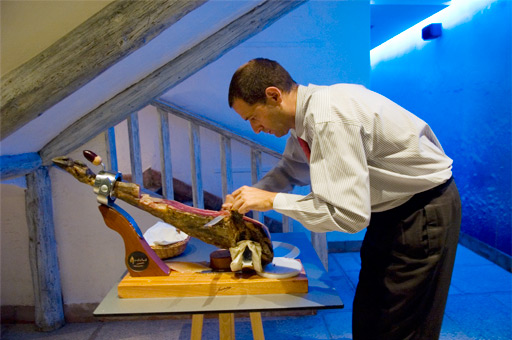
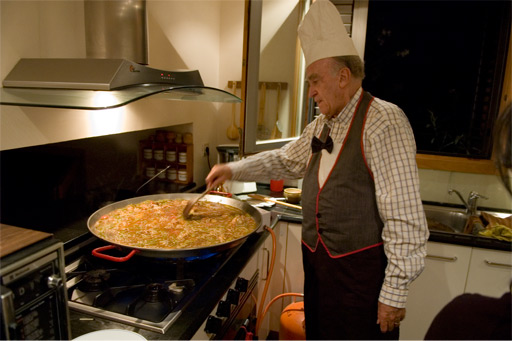
Hmm... favorites from this trip:
We've seen hundreds of paintings in Spanish musuems, lots of masterpieces. But the ones that stick with me are never the "greats". La virgen del arbol secco by Petrus Christus c 1450 will linger. It’s an intimate canvas full of mystery. The image on the web doesn’t do it justice. The painting hangs in the Thyssen-Bornemisza, an eclectic museum showcasing the collection of the Baron Hans Heinrich Tyssen-Borenmisza and his children. As an aside the Baron's name is a prime example of why I object to hyphenated surnames-they are a mouthful.
The fisherman in Galician villages hang tiny models of their boats in the rafters of the churches. I only visited one of these churches but there are scores. Photo project anyone? Imagine a long exposure on a large format plate done in the morning light as a few of the boats bob in the breeze and the old women pray for the safe return of their men.
The Spanish and Portuguese governments have converted castles and country estates across the respective countries into grand hotels. In Spain the hotels are called paradores, in Portugal pousadas. If you search around the net (and with local travel agents) you can find deals that make these hotels, relatively speaking, affordable. 7 nights for 400 euro, 5 nights for 300 euro etc. You get cards a bit like euro-rail passes. We stayed in a few of these hotels and were impressed each time. Another plus, they tend to be kid friendly while not being obnoxiously kid-centric.
The Spanish province of Extremadura always inspires seeming both familiar (reminds me of the American west or of northern Mexico) and impossibly ancient but I always find myself zipping trough trying to make it back to Madrid for a flight. The eastern edge of Portugal is similarly appealing. If you've ever driven the road from Burnet to Marble Falls in the Texas Hill Country you'll feel right at home.
The subway system in Madrid is clean, modern and efficient. Even the windows of the cars are clear and scratch free, odd but welcome in a city so oppressed by graffiti.
I've probably already mentioned Portuguese beaches too much. We really loved them (and I say this as a non beach person). Do you know the film Mr. Hulot's Holiday by Jacques Tati? It's a bit like that.
That is all for now.
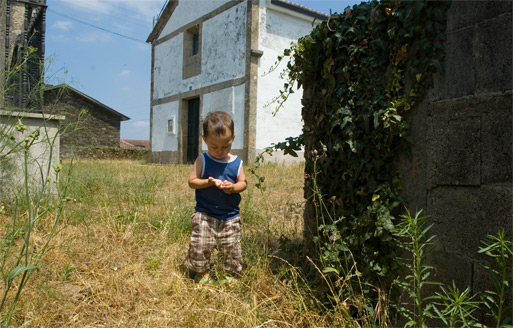
July 26, 2006
Driving in Europe
When I drive on local roads between cities in the states I consult a map find the road or roads that connect cities and follow those roads from place to place. If the roads are well signed there is this sense of certainty about where you are, what direction you are going (N, S, E or W), and which road you are traveling. "I'm on Farm Road 287 West," you might say to yourself. But throughout most of Europe a completely different system is in place. There are signs at intersections telling you the direction of the next city, so instead of a sign saying this is so-and-so road South, you'll just get a sign directing you to Mexilhoeira or Santa Maria de la Monte or wherever. If you have developed your navigational skills in the American system, the European system requires a certain leap of faith because often (and especially on small roads) you never have any idea exactly which road you are on and that's sort of the point, it doesn't matter because you'll get to your destination if you just follow the signs. At first this is bewildering, but once you get used to it, there is a sense of liberation because (assuming the local governments have done their jobs and put up proper signage) you'll never lose your way. The problem with the European system is that if you are unfamiliar with the exact order of the towns you will be traversing you can get spectacularly lost somewhat easily and as roads are often not otherwise marked. Both systems have their advantages, I can't decide which I prefer.
. . .
If you must have driving directions, http://www.mappy.com does a pretty good job covering Europe.
. . .
We've driven almost 2000 km now and haven't seen a single cop.
. . .
Quintessential European motoring experiences:
Entering the heart of a historic district, getting a bit turned around on the windy streets, and driving down a narrow alley that is either a dead end or too skinny for your car (usually on the top or bottom of a steep hill). To complete this manuever you must ompletely block foot and motorcycle traffic in both directions.
Passing a car on a freeway only to have another car (often with German plates) come out of nowhere at a high rate of speed tailgating within inches of your car until you move over and let him (it's always a him) pass.
Getting yourself into an impossibly cramped parking spot in some underground lot and realizing you have no idea how you will be getting out of the spot or out of your car (solution for the latter, climb out the rear if you have a hatch back).
Driving on a mountain road that narrows so only one car at a time can make certain turns... getting to those turns and seeing another line of cars heading towards you and having to drive in reverse for several minutes in order to let those cars pass.
Passing on roads in which there are three lanes and the middle lane is a shared passing lane.
Driving a Smart Car.
July 26, 2006
Snapshots from the beach at Figuera da Foz today
(Where every picture looks like a 60's postcard.)
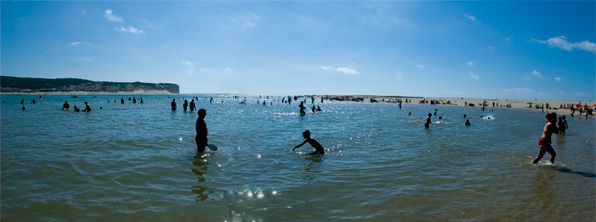
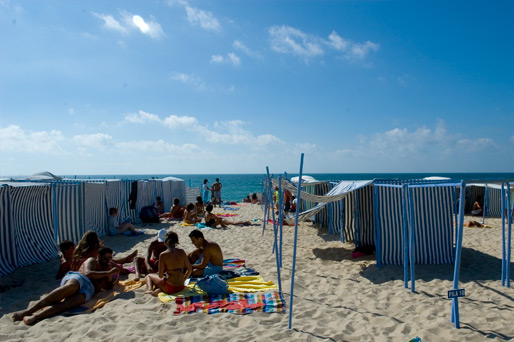
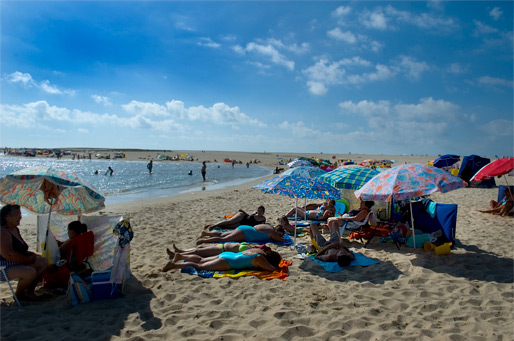
July 24, 2006
1400 years of history and then...
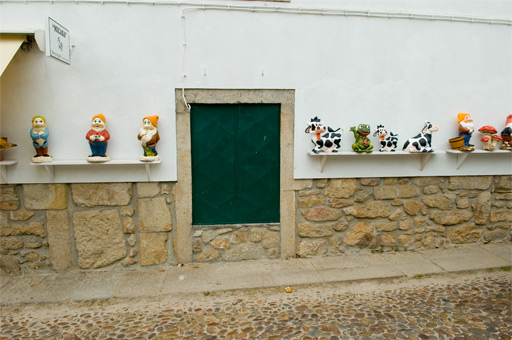
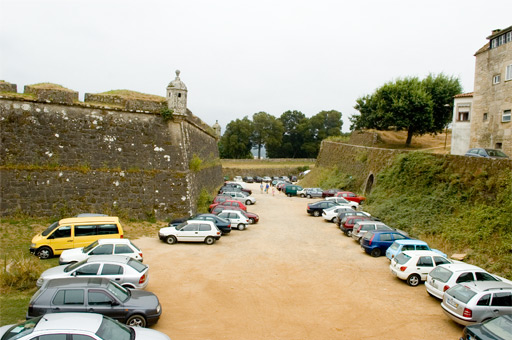
July 21, 2006
Greetings from Salamanca
If this blog´s been feeling a bit lonesome it might be because I inadvertently turned on comment moderation... today I found several pages of comments waiting for me—sort of like being at camp and discovering a batch of misplaced letters. Anyway it was fun to read all the comments even if I accidentally managed to delete most of them (damn Spanish keyboards).
. . .
We have a car. We are driving! When you've been trapped in a single house for a week this is liberation! I´ve driven around Spain several times but never in this direction... the countryside here is familiar in a roundabout way as I've seen it in scores of medieval paintings (in college I wrote many papers on bestiaries and illuminated manuscripts). So while I was driving I kept having moments somewhere between memory and deja-vu. Coming upon the walled city of Avila I recognized it from a 14th century illuminated manuscript. Looks virtually unchanged. Even the trees which seem fantastical in the illustrations are just the olive and almond trees they have in this area... I had a similar experience in the Dutch countryside a few years ago. Those clouds you always see in the Dutch masters, they are just the clouds they have in Holland.
. . .
Speaking of invisible threads, here´s one that came via email from someone I haven't spoken to in 20 odd years... "Actually you and I had the same Spanish class when I was a Sophomore. Was our teacher's name Mrs Torres? Anyway I remember getting some Apple computer stuff from you, and I remember you let me borrow a disk (floppy disk no less) which you entitled "Late Night with Raul Gutierrez" - I really don't even remember what was on it now, but it was (ancient) Apple IIe stuff.¨
. . .
Photos for Becky and Paul:
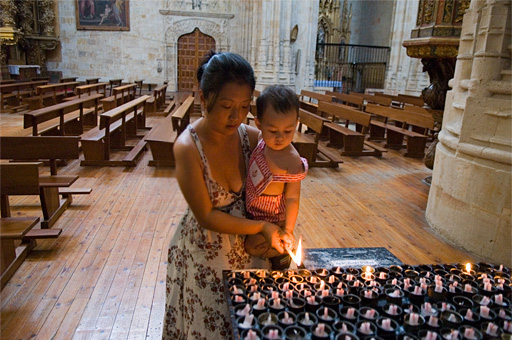
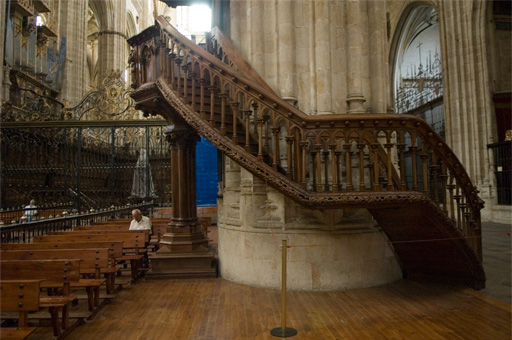
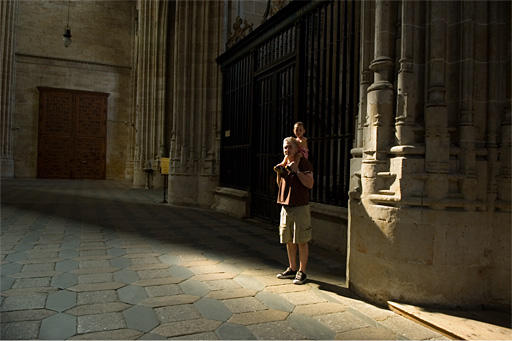
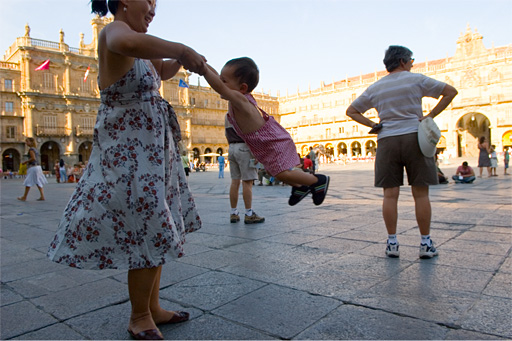
...
Random aside: I am typing this in a hotel bathroom, my family is asleep... it's about 1 in the morning. A minute ago I had to get something from the other room and my wife started. "Have you made the guacamole?" she asked both eyes open, but completely asleep. "What?" I answered. "Don't worry, you don't understand anything about guacamole," she replied.
Through the shut door I hear her chuckling to herself in her sleep.
July 18, 2006
Notes from Madrid
We've been in Madrid a week now and a week is about how long it takes before Jenn and I start seeking out comfort food (see previous post). For us that means Mexican or Korean. You would think Mexican food in Madrid would be a no-brainer, but Mexican friends who have tried scores of restaurants report nothing but heartbreak (Part of the problem is that most Spaniards don't have a taste for corn—"Corn is chicken feed," sniffed a Catalan friend—and part of the problem is that spicy food is almost unknown here.) So given this knowledge we decided to seek out a Korean restaurant on the assumption it would be run by Koreans and cater to Korean tourists... We ended up at Han Gang Restaurante Coreana at Calle Atocha, 94 and when we entered at 8:00 (super early by Madrid standards), the place was packed with a Korean bus tour, a good sign. The menu in translation was less promising, (chicken in catsup?), although Jenn said the Korean was correctly rendered. The other issue was the veal which was substituted for both beef and pork throughout the menu. Veal bulgogi? We weren't so brave. Veal mandoo was edible though. Jenn enjoyed her bibimbop and the panchan was normal (although skimpy). The kimchee was decent. I barbecued some chicken at the table which was fine, but not exactly Korean. Nothing was spicy. All in all not terribly authentic, but not the horror it might have been.
Afterwards we shared beers in a pleasant bustling square with my brother Ed and an English friend of his named Briony. Both had lived in Kyoto for several years and both had moved from there to Madrid (my brother now lives in Prague). Both also are died-in-the-wool ex-pats. Jenn and I (both failed ex-pats) had lots of questions primarily about the desire to keep moving versus the desire to nest. Two comments that stuck with me: "It's much more difficult as an ex-pat to go home a resume a 'normal' routine than it is to head off to a new city" and "The thing about being an ex-pat is if you feel depressed or stressed you tend to blame it on the city, it's never about you."
Ed enlightened us as to Czech drinking etiquette. "You don't talk. You drink and you contemplate your unhappiness. When you finish a beer, another is served immediately and you drink again. The Czech always see Americans laughing and talking and think there must be something wrong with them. 'They must be simple,' they think, 'How can they laugh with so much unhappiness in the world.'
Also in Prague never order a salad, especially if you are a man. Men eat meat."
Hmm.
What else? We saw a Moroccan guy with a large knife in his hand running down an alley being chased by a guy with a big stick. That was exciting.
I would complain about the heat but I just checked in and noted the weather in Brooklyn where it is both hotter and infinitely more humid, so I'll keep my mouth shut. Also soon we'll escape to Galicia where it is somewhat cooler. This will be good for me, a hater of heat and for Jenn who is pregnant with our #2 (almost 3 months now). See how I buried the lead?
That's it from here. Goodnight.
July 14, 2006
Chats
We have been in the cocoon of family and haven't spent much time with Madridleños yet, but from the people we have encountered the topics of the moment seem to be:
1. Zidane's headbutt - The popular sentiment so far seems to be squarely with Zidane. As one man put it today, "If you talk too much about my mother, I go crazy."
2. Crime - Everyone we've met has a firsthand story about petty crime. "Totally out of control" was the phrase used most often. I have been warned not to bring "la machina" (my camera) into Madrid proper. "You will be robbed for sure. 100%," I've been told. People have a hard time believing New York is safe even at 3am. My statement "I carry my camera everywhere. Openly. On the subway. At night," is met with disbelief, almost as if my fellow New Yorkers are rubes for not robbing me.
3. Tabloid figures, especially Spanish royalty and demi-royalty - Note it is not cool to question the Prince´s wisdom in naming his daughter Leonor. Note when someone talks about the Spanishness of the Queen, you should not blurt out, ¨but she´s Greek.¨ Also it is considered nothing short of absurd that you have never heard of Letizia Ortiz. To brief yourself on these very important matters please visit the Spanish Royal Family´s very own website.
Aside: Is there anything more sublime than Clifford Brown´s trumpet on Dinah Washington´s version of Summertime while sitting out in the dark watching fireflies in the trees and lightning flash in the sky over the Spanish hills?
July 12, 2006
Madrid
It is unusually dry in Madrid. Pull yourself from the pool and within what seems like an instant even your hair will lose all trace moisture. The weather, as it is everywhere, is out of whack. They call it African air, normal in Gibralter, but strange here. There has been unusual heat, and clouds, and wind, but today at least was nice, but oh so dry.
We are in a neighborhood where everyone has high hedges cut into geometric shapes and the trees look as if they were designed by Dr. Suess... lots of grass and sky around the houses. In the back a spectacular fruit and vegetable garden full of tomatoes and strawberries and lettuce. Our city kid son quickly shook off the plane flight and gleefully set off exploring the place... he declines to wear clothes and toddles around happily and shamelessly collecting rocks, observing ants, eating strawberries, and just being a curious little puppy of a kid.
Nothing rotten to report. Happy times. Happy times.
July 7, 2006
Palmetto
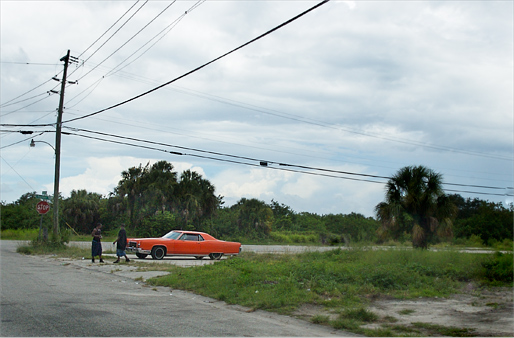
A couple of days ago in Florida I was wandering around... driving semi-aimlesslessly exploring parts unknown when I came across an interesting little neighborhood outside of Palmetto. Beckoned by brightly colored houses, chickens in the yards, and plastic statues of the Virgin Mary, I parked my rental car, met some old men playing checkers, and started hanging out and taking a few pictures. The men introduced themselves as Little Louis, Speedy, and Tubbs. They talked hurricanes, jail, and women. Tubbs told me to find his friend Wanita up the road. "She loves having her picture taken," he said, so I headed down the road.
Half a block away a young guy with an extraordinary face appeared out of nowhere. A deep scar ran from forehead to chin and when he opened his mouth it glinted in the sun. His teeth were gold, all his teeth were gold, and it gave him a striking somewhat mechanical look. I desperately wanted to photograph him but something told me not to raise the camera without chatting first. Rarely do you run into such a face, so I smiled and asked him about paintings on a pair of what looked like airplane hangers (apparently an old strawberry cannery. I got no smile in return.
"What's your business?" he growled.
"I'm just taking some pictures. Thought that building looked interesting... and Tubbs over there told me Wanita might want her picture taken," I smiled.
"Why would anyone want a picture of that busted bitch?"
Taken aback, I answered carefully, "Because I like to tell people's stories, and it sounds like she has a story to tell."
"There are stories everywhere and you have no call to visit" he said, spitting close to my feet. "I say you're getting into other's people's business. You have no need to picture me."
At this point I was choosing my words with extreme delicacy and speaking softly, "I haven't taken your picture. I was just over there with Little Louis and Speedy and I didn't point my camera at them until after I asked to take their picture. I showed them respect, and I'm showing you respect. I'm not pointing my camera at you."
"I don't like having my picture taken."
"No problem, I'm not taking it."
"Ok then," he said looking at me.
Tubbs called out, "He's not the law fool, look at his scrappy shoes. You ever seen the law in shit shoes like that?"
And with that the guy gave me a big golden smile and I started walking away thanking god for my chucks. Little Louis came running after me. "It's time to leave now boy. Booger thinks you're police and he's running. He's a shooter if you know what I mean."
That was all he needed to say. I'm not one to look for trouble. But Booger if you're out there, I'd still like to take your picture and hear your story and I think you're wrong about Wanita I hear she's got dance moves that make an old man young.
June 29, 2006
Winging it to Brooklyn
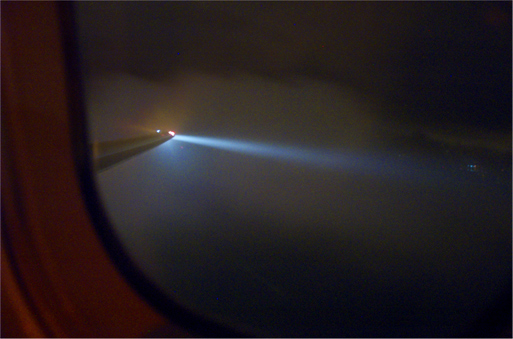
I'm back at home and can finally start to tackle my server issues which have made posting very difficult. I've posted minimal text because each post must be entered by hand and paragraphs of text are a mess... I'll try to sort through the dross and get everything back to normal tomorrow. I have a backlog to put up.
May 3, 2006
Where I go when I sleep
I was responding to a friend's query about Pakistan the other day when I came across this image in my files taken way back in 1991... A girl in white was standing in the foreground but it was a long exposure and she had only paused for a moment before wandering home. Not even a bit of a blur remains... so it's a failed shot, but the place often comes to me at odd hours of the night.
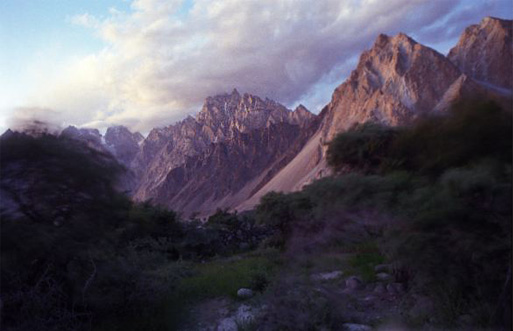
April 29, 2006
14 Year Old film
In my endless quest to reorganize the attic, I came across a rucksack with some unexposed film from the early 90s, at least 14 years old. I expected some radical color shift or fading, but the images were crisp and clear. They are from Ladakh. I am in the last frame and in it, I'm almost unrecognizable, the product of too much time on the road. I still have those boots--leather Vasques with a steel shank... possibly the best trekking boots ever. They don't make them anymore of course. Everything now is high tech-carbon fiber covered in goretex etc... but there is nothing like good old fashioned leather.
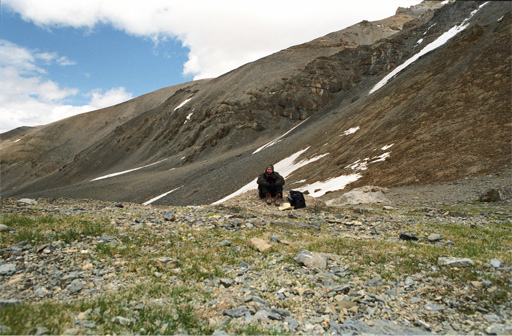
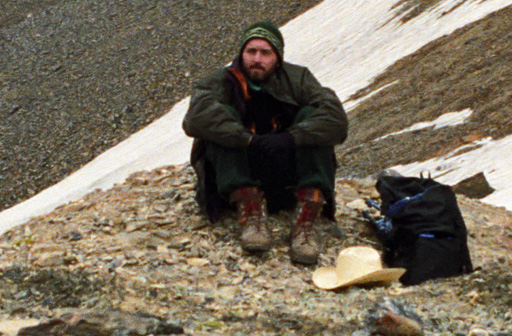
April 3, 2006
A few items on my "places I want to experience before I die" list
(in no particular order)
Cappadocia, Turkey
Civita, Italy
Alang, India
A trip down the Niger river in Mali.
The road from Asmara to Assab in Eritria
Pyongyang, North Korea
Longsheng, China in the early fall
Harbin, China in the dead of winter
Donegal, Ireland
Tunis
Moreno, Argentina
Malinge Lake, Canada
Hill of Crosses near Šiauliai, Lithuania
The source of the Mekong in Kham
The Cotswolds (by foot)
Snowdonia National Park, Wales
Tangier (see previous post)
Dodecanese, Greece
Otavalo, Ecuador
Sana'a, Yemen
March 3, 2006
Ghosts of Hispanola
If you ever find yourself in this part of the world. I recommend turning off the main road into a path that runs through a field of sugar cane. Kill the car, open the windows and maybe open the door and stand outside letting the sweet air envelop you. Listen to the sound of wind in the high cane with the surf beyond. This, you will not forget.
March 2, 2006
Republica Dominicana, Driving, Part the 2nd
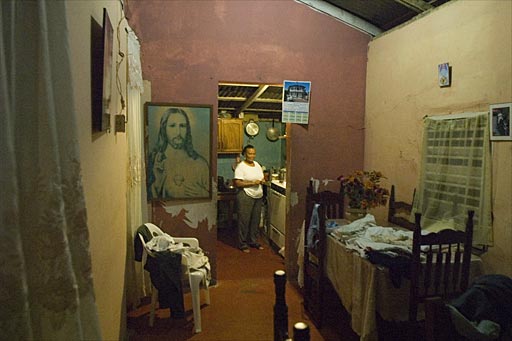
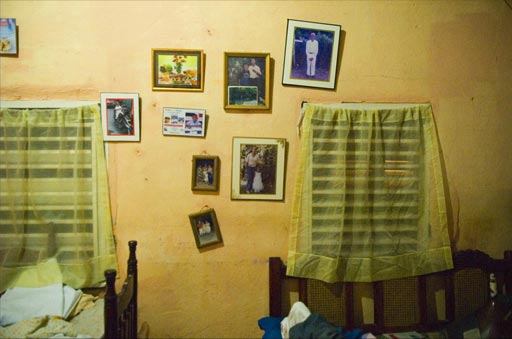
Many guidebooks on the Dominican Republic warn the reader WHATEVER YOU DO DON'T DRIVE AT NIGHT, but they don't explain their excess of caution. I wanted to know what the big deal was, so I went out tonight. Here are the reasons the warnings are in all caps.
1. No streetlights.
2. Motorbikes that pass on either side of you without headlights.
3. Potholes so deep they bang your teeth together.
4. Bridges that don't exist and are unmarked by some sort of "bridge out' sign.
5. People in the streets.
6. Dogs in the streets.
7. Chickens in the streets.
8. Police who stop you and ask you for a few pesos for some Presidentes.
9. Random guys waving machetes who appear out of nowhere in the middle of the road.
10. No stop signs on unlit 4 and 5 way intersections.
11. No streetsigns whatsoever.
Don't take this as a complaint. We're all enjoying ourselves here. Driving is part of the adventure.
March 1, 2006
Republica Dominicana
I love driving in countries where there are no traffic rules. There is something exhilarating about getting to a 5 way intersection of zooming motorcycles, cars turning right and left across traffic and JUST GOING FOR IT.
December 20, 2005
The internet is a mysterious and wonderful thing
Back in August I wrote about revisiting a small village in Tibet after many years. I had brought photographs of my previous visit and the villagers told me that a teacher I had met there who had befriended me and helped guide me around had died.
Well today I got this message "hello, Raul!
it is nice to see that you went to back Amchok this year and it is good to see that you wrote things about your visit to Eastern Tibet. Though it was sad to see that you mentioned I was died! I am alive and live in Austria. I am the one who guided you Amchok some 11 years ago.
regards
Amchok Choetar"
October 30, 2005
Marfa, Texas
I forgot batteries for my D70 so no instant gratification photowise...
These are a few things that struck me today:
In response to the question, "Where can I find a drugstore?" asked in Marathon: "Drive down 90 about 27 miles."
Ants so big they feel like pebbles if you accidentally step on them.
A group of cowboys and their wives at saying a prayer before dinner, heads bowed, hats bunched together: "Dear Lord, thank you for the land and it's bounty..."
A weeping willow in the wind catching the last rays of sunshine, and then turning dark against the sky.
The judge whose eyes moistened when he told me his son had died.
A man who when asked how long his family had lived here, crinkled his eyes, tipped his hat and said, "Siempre. Siempre vivimos aqui."
Mars in the night sky so red it felt you could touch it.
Jackrabbits. First one then 20 more darting across the road in the headlights.
The silhouette of lone man standing far out in the desert, a tree on fire.
October 26, 2005
Marathon, Texas
After escaping the hell that is Midland and forking off the main road, the journey to Marathon was quiet, the roads empty. This is my kind of driving. Open country. Deer. Hawks. The occasional coyote lurking in the cacti. As one heads south the landscape gradually becomes more spectacular. First one seemingly out of place mesa. Then another, then, suddenly you are in a John Ford movie. Painted skys. Rays breaking through the clouds. Dark streams of rain in the distance. All the stuff that makes me swoon.
If you ever find yourself here, I can heartily recommend the Gage Hotel: fireplaces in the rooms, millions of stars in the sky, a decent pool, wireless. Perhaps some photos tomorrow.
August 20, 2005
Recipe for a Sad Me
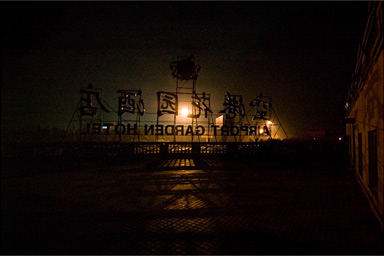
1. Buy clean clothes for flights home.
2. Arrive early for flight from Chengdu to Beijing.
3. Delay flight 2 hours. Force me to check bag.
4. Have flight arrive in Beijing late but not so late that a connection is impossible.
5. Have airline lose bag that they forced me to check.
6. Find bag and run to opposite side of airport. Break into flop sweat.
7. Close ticket counter in front of me. Miss flight home to wife and child.
8. Offer a hotel for the night.
9. Make that hotel the China Aiport Garden Hotel located in the "Aiport Industrial Zone."
10. Put a "sanitized" paper strip over the toilet in said hotel. Open the toilet to find it not only not sanitized but freshly used and unflushed.
11. Have the only English language magazines in the lobby be: China Eastern Aviation Monthly, May edition, Cat Fancy (Christmas 2004 edition... especially hateful given my anti-cat status), and Military Miniature Collector (June 2005). All obviously detritus from previous lost souls.
12. Have the only restaurant around be Nurburg-King Coffee (offering neither burgers nor coffee).
13. Arrive back from Nurburg-King Coffee to find an Australian named Lazy Fred poking through my bags. "Just being a bit nosey mate, we're bunking up tonight. Let's get sloshed and tear this place up."
13.5 "Call me Fred. Call me Freddy. Call me Lazy, call me Lazy Fred. Ahh I don't give a fuck."
14. Lazy Fred's disregard for even basic bathroom etiquitte.
15. The fact that planes land so close to my hotel room I can see the passengers in the windows.
16. Dialup, windows 95.
17. Being on standby and having an awful feeling about tomorrow.
:::::::
Note to others in a similar situation. If you need to jump to the top of the standby list:
1. Say your wife is pregnant.
2. Say your wife is due any minute.
3. Determine that the ticket lady has a thing for Koreans (note Korean pop star pictures in her cubicle).
4. Say your wife is a Korean actress.
5. List your wife's films: My Long Lost Sister, The Rich Cry Too, and Legend of Yun.
6. Get theatrically teary eyed.
7. Watch the ticket lady move you to the top of the list. "No problem, please say hello to your wife for me."
August 19, 2005
Chinese underwear
A few years ago I was traveling around Yunnan and was robbed of everything except the clothes on my back. While I was living with the police who were looking for the robbers a policewoman took me out to buy some new clothes. The first order of business...Underwear. Finding my size was difficult, but the police lady was diligent. She finally found a pair that she thought were perfect. Imagine bright red Haynes with a very high waistband (it came over my bellybutton)--the best feature a little pocket with a zipper right over the crotch. The police lady held them in front of me and zipped and unzipped the zipper to demonstrate. Then she smiled and put her finger to her lips... ie it would be my secret. Those were still 2 sizes too small and it was several weeks before I got to a place where I could find boxers to replace them. I don't think I've ever felt dorkier in my life than when I had those things on.
Fast forward a few years, the situation is a little better. You can find boxers or briefs, but the boxers are oddly short. Sort of like short short boxers. And I don't do briefs. Ahhh...the USA land of lovely socks and boxers.
Sigh.
We're in Chengdu. Tomorrow I fly home. Yesterday was the worst day of the trip. We got caught in a truly massive traffic jam. The mountain had collapsed a major section of road. We waited for 6-7 hours. The line of busses and cars stretched as far as the eye could see. And because fate has a sense of humor, I was bitten by a bee a few minutes before the cars started moving again.
More on this and many other things as well as photos when I am back in Brooklyn.
August 15, 2005
Development is the Absolute Principal
That's what billboard reads outside Hongyuan and it's obvious the motto has been taken to heart. Since I was last here only 4 years ago Hongyuan has doubled or tripled in size. The roads have been paved. Modern streelights adorn the streets. Housing blocks now stretch out into the plateau. In a sense Hongyuan has always been a development. For China it is a relatively new city, created out of scratch when the Red Army stopped here to regroup in 1949. The city was not near anything in particular, just an outpost in the middle of the grasslands. It is miserably cold in winter and brutally hot in summer. From the forties to the eighties it was little more than a nomad trading post and army base. In the early 90's when I started visiting the city was probably 85% Tibetan. 10% Hui Muslim. 5% Chinese. It was a rough and tumble place with pool tables lining the streets and one eyed Tibetan prostitutes beckoning passersby from smoky dimly lit rooms. Yaks roamed the streets and there were men with their horses selling dog skins and fresh mares milk. Tibetan midget fortune tellers hung out at the gates of the bus station ready to predict your future. Knock down drag out fights were a regular nighttime activity. Almost all of that is gone now. A Chinese policeman explained to me that the housing blocks were exclusively for Chinese and that the local government provided big incentives to settle here. "The city is 75% Chinese, soon 85%," he told me with obvious pride. There are now ice cream parlors, nail salons, and kids playing basketball, it's a nice town and every day it becomes a little more like everywhere else, but walking down the main street makes me sad. I miss the old Hongyuan.
August 15, 2005
Aba-Amchok
Yesterday in Aba we met a family of Tibetan girls ranging in age from 18 to 35. Both parents had died. They were on their own, and making the best of it. The sisters ran a restaurant, a hotel, and an internet cafe. Each was impressive. The youngest were hard workers and had an almost Japanese manner about them. The oldest had an obvious sense of style (her restaurant, extraordinary for Aba, would not be out of place in New York).
The middle daughter spoke English, one of her five languages. She showed us around town and the monastery. At night she took us to a "Tibet dance party". All the while we had conversations about her life, her future, her boyfriend (a Tibetan man who is living illegally in New York) and so on. The talking continued well into the night and although we were all tired I kept getting the sense she didn't want us to go. After the dancing we returned to her sister's restaurant. It was almost 2 at this point and after some more chatting I said we should be going... She looked at me and with piercing frankness said, "You are lucky. Your world is very big. You can travel where you want and do what you want and you are free. You have friends in many places. Maybe I am just a friend you will forget. My world is small. I am not free. I will not forget this talk or this night. Maybe you will return. But maybe you will never come here again." And then she stopped and looked down.
I promised to look up her boyfriend and to send some English books, but there was a truth to what she said, the traveler collects people and experiences and often forgets them or forgets to look at them as people whose lives they might have touched. But not always....
Today I returned to the small village of Amchok. I had stayed with the headmaster and his wife many years ago (pictures here and here). I returned with a batch of pictures from my first visit in 1994. The town was still recognizable, although much bigger. I stopped the first person I ran into, a monk on a motorcycle, and showed him the pictures. A crowd gathered. Everyone knew the faces in the pictures and in a few minutes I was on the back of a motorcycle on my way to headmaster's house. He was no longer living at the school, retired I think, and was in a small adobe house a bit outside of the town. The monk yelled over the the brush fence announcing a guest and in a few moments there he was. The headmaster. Same sturdy face. Same thick hands. I handed him the pictures. He smiled as he looked at an image of his younger self. Then studying a picture of his wife he started tearing up. His wife had died, as had an 18 year old girl in one of the other pictures, and the English teacher who had brought me to the village in the first place. The English teacher was named Chotar. He had studied in India and traveled with an English Tibetan dictionary and several volumes of Shakespeare. He had learned much of his English from Shakespeare so his conversation was unusually florid. I did not find out how he died, or the girl, or the headmaster's wife. We didn't have language in common and trying to find out the details through pantomime seemed too painful. The headmaster invited us into his house, offered us some yak butter tea and bread. He lived there with his daughter and granddaughter and a nun who might have been another granddaughter. All the while he kept going through his pictures and shaking his head. He separated out the images of his wife and those of himself. There was one picture of the two of us by a river and we took an updated one in the yard. In that moment the weight of the years lifted as we both froze for the click of the camera and smiled in relief afterwards. I hope to return.
August 13, 2005
Strangers
I just sent 2 small children into paroxysms of terror...real horror... I don't think they had ever seen anything as scary as me.
Baima is so unused to foreigners that the people here react as if I'm from outer space, or a zoo. I've been poked with pool sticks, had rocks thrown at me, surrounded and stared at with slackjawed wonder, and surrounded and (I think) mocked. What's strange is that you never get this reaction out in the countryside. Out there people just smile, wave, and react like you're a normal person...
August 13, 2005
small things
All around this region there are long stretches of emptiness. Green grass to the horizon, sky, low hills. You can walk for hours or days out into all that green. At first the experience is disorienting, but soon you find well worn paths heading out from somewhere to somewhere. If you walk long enough on those paths you will find small groupings of rocks stacked three or four high. These are symbolic stupas arranged by local nomads as they pass. I am often more moved by these small acts of faith than I am big temples or statues... because for me these grace notes are not just mindless devotional acts but are simutanously marks of respect and defiance, the artist's mark in the futile struggle against nature.
August 13, 2005
Baima
Today was an easy day. 140KM on gravel paths between Mei Shan and Baima. Most of the way was completely unpopulated... just deep forests punctuated by swaths of clearcutting. Logging is especially destructive here because of the steep valley walls. The trees slide down to the river below leaving utter destruction. The rivers turn brown with mud. All along the way the road was under construction by young Chinese men and Tibetan girls. Our car was surrounded a few times by curious workers checking out the strange looking people inside. One man asked me if I was a Uygher from Kashgar, assuming I was Chinese.
Baima is a flat empty city. It's hot. There are sheep and yaks wandering around on the main street. Otherwise it is very very quiet. After this post and a few emails I'm going to for a walk to the prayer flag field up in the hills.
August 12, 2005
Spanish Galleons
We left Serta this morning under blazing sun. But the weather here is fickle, the minute a cloud passes the temperature can drop dramatically and soon there were clouds and rain. At this altitude the bottom of the clouds skim the hills making the sky feel close enough to touch....
About 30 miles out of Serta we headed down another river valley. This road has long been closed to foreigners probably because it is unfinished.... there were several washouts along the way but our 4WD Nissan handled the rivers beautifully. Some other cars were not so lucky.
Somewhere down valley the architecture changed. Tibetan stone homes come in all shapes and sizes but there are some common features. Generally they are 30-60 feet wide with walls that slope gently inward. Most are 3 to 5 stories tall. The first level is reserved for livestock, hay and so on. The middle levels are the living quarters with a big kitchen, small bedrooms, and, in some homes, a library. The top level opens onto a terrace, a place for drying crops, growing plants and flowers ectera. Outhouses hang from the back of the 2nd or 3rd level. Exterior decoration varies from village to village.
But in this valley the stone part of the houses are taller and thinner than in other places. The top part of the houses are made of wood and seem almost like a second structure. These wooden structures extend out 1/2 a log length on all sides from the stone base. The windows feature elaborate woodwork, and there are many prayerflags on the roofsw. The effect of is wooden ships. The homes are perched precariously on the edges of high cliffs again making them seem like ships marooned after some otherworldy calamity.
When I saw these villages a chill went up my spine. As a child I wrote a book for myself of pirate ships lost in a fog that ended up stranded on the rocky ledges of a mountain after a passing comet changed the tides and drained the ocean. This was my 9 year old book illustrated in 3D... of course in my book the pirates eventually grew bat wings and flew down from their ships pouring hot oil on the people below. Here there were only young children and old women carrying impossibly large loads of hay on their backs up the steep mountain trails, but still it is rare in this life that dreams are so fully realized.
August 11, 2005
Travel tips from the road
If you find yourself heading to this part of world, here are some practical travel tips from the road.
1. Watermelons are your best bet fruitwise. Buy a small one, carve a small circle in the top (like a jack-o-lantern) and eat the insides with a spoon. If you cut the top like a lid it will keep for 2-3 days.
2. Baby wipes. Showers are non-existent. Baby wipes keep you feeling semi-fresh. You can actually find them here now so no need to haul them.
3. It's not about being clean, it's about feeling clean. The best way to feel clean: get your hair washed at a salon. They use warm water and often follow it up with a nice head massage.
4. Shaving. Why bother.
5. For your pack. Plastic baggies. The key to a tidy pack is to keep everything compartmentalized. Plastic baggies keep dirty stuff away from clean stuff and keep wet away from dry.
6. Clothes. Don't bring any clothes you will ever want to wear again.
7. Food. It's ok to eat it as long as it's steaming hot. If it's not hot don't eat it. The best bet in all of Tibet, skewers. The skewer ladies come out at night and depending on the size of the city have a decent variety of meats and vegetables.
8. Toilet. All toilets here are untenable, it's best to do it in the hills. If you want to be eco-conscious make sure to smear everything nice and thin. Round rocks are more eco-friendly than paper. If you must use paper, burn it.
9. Fights. If you stay out late you will see fights. It is ok to watch from the sidelines but stay to the back. If knives are drawn, run like hell. Remember everyone here carries a knife.
10. Drinking. If you are a foreigner you will often be grabbed by the head and brought into a circle of men and expected to display your drinking prowess. The problem is that the drink of choice is Bai-jou, a sorghum based liquor that smells like kerosene (we used it to start a fire the other day). You will not outdrink these guys. The best option is to start laying down challenges and starting lots of very loud toasts. If you are lucky everyone will get so caught up in the challenges and start arguing amongst themselves that you can slip away, otherwise prepare for a rough evening.
August 11, 2005
Melons
Conversation with a young man in Sertar.
man: Do you speak English?
me: yes
man: Are you from Meiguo (America)?
[Mei means beautiful btw. Meiguo means beautiful country.]
me: yes
man: In Meiguo every woman has large beautiful breasts like melons. Here women are flat like paper.
[at this point I was about to launch into discussion of how television might distort reality... that American women were no different than women anywhere else and that as far as I could see women here were semi-curvy... but then I thought, this poor guy is stuck here, why destroy the fantasy...]
me: In Meiguo we have magic water. After 2 months in Meiguo even the women here would have large beautiful breasts like melons.
man: Meiguo is the number one country on earth.
August 11, 2005
Serta, Serba, (Sertar)
Serta is one of those cities with a variety of names depending on which map you consult. For the record the people here say Serta. We came up from Ganze on a road not listed on any of the maps but here we are.
Outside of the city are tall towers and bus sized rocks absolutely covered with prayer flags. The city itself is oddly modern with stoplights (the first we have seen since Chengdu), nicely paved roads, and a store labeled "Chain Store." Modern streetlamps line all the roads. There are scores of new unoccupied buildings. At odds with the modern town are the townspeople wearing a variety of styles of Tibetan clothing some of clothing styles are archaic even for Tibet and are rarely viewed outside of 19th century photography collections. A shepard chases a few stray yaks through the large center square. People find my leather aviator's hat amusing (it fits tight over my skull), odd since each person is wearing outrageous headgear.
The drive here from Ganze was easy... We left the city and headed through vast fields of wheat and barley all being harvested by hand... men and women with sickles cutting the stalks and bundling them up in neat bunches. Gradually we climbed up the valley to the plateau and crossed a few passes. At one mountain hundreds of local people had gathered for a festival. They were circumambulating the mountain, men, women, small children all making the hike (and seeming to have a great time) in the thin mountain air. Just hopping out of the car and walking up the road for a few photos left me out of breath.
Eventually we came to an ancient monastery town clinging to the side of a mountain where we stopped for a tour from some friendly monks who were busy rebuilding the place. Surprisingly pictures of the Dali Lama were all around. We continued up some river valleys through some heavily logged forests and finally down a river to this wide valley. The flag covered towers along the way were the first sign that we had crossed out of Khampa territory to something else all together.
The first order of business upon arriving was food. For me: delicious yak and potato skewers seasoned with cumin, chili, oils, and soy sauce and roasted over an open fire. I could eat this stuff every day.
We haven't had much time to explore yet, but wanted to check email in case the power failed. The internet place is another Mad Max sort of operation in a dark room with about 20 kids hunched over screens playing Warcraft, Counterstrike, and Dance Dance Revolution.
Now it's time to log off and hit the town.
August 10, 2005
Nogmoon Villages
I think we found them. :)
August 8, 2005
Sershul (Serxu)
We have traveled many many miles since the last post.
The highlights have been:
A little log cabin village 4 hours up a small but raging stream. This was a village without electricity full of horses (with braided manes and tails), and beautiful vegetable gardens.
A monastery up the same stream with truly GIGANTIC trees--Trees at least 10 feet wide. At this monastery I was offered a plate of hooves. I declined.
The festival we ran into today up on the plateau where the women were wearing hats I have only seen in photographs taken over 100 years ago.
The view of all the snowcapped mountains from the Chola pass... around 5050 meters high.
All the lovely encounters we have had in people's homes and tents.
The low points have been:
Going 5 hours up a river only to have the road washed out.
Having to camp in the car because of said washout. It was freezing and raining. Our firemaking abilities were less than impressive.
Getting a very bad cold at altitude.
Paul forgetting his bag with his passport on the side of the road.
The anonymous meat I ate yesterday that is still making my stomach grumble.
Rain. (It's been pouring rain every day for at least part of the day)
Getting locked into our room at night in some places.
......
Other random notes.
There have been many changes around here since my last visit. The main ones being electrification and fencing. All along the main roads there are now electrical lines and telephone lines. You really have to travel far up side roads to lose these. Also there is now fencing on the plateau along the roads. This is new too.
The city of Manigango, once a 2 building trading post is now a real town with at least 4 streets. There was a heavy police presence there yesterday with groups of police in full riot gear marching up and down the streets. We were not allowed out of the restaurant. I have no idea what was going on.
The roads in this area have been vastly improved since I last visited. A few years ago they were just paths on the plateau. Now they are real roads, full of potholes yes, but much improved. The drive over the mountains felt much safer. We only saw one major accident (a huge truck that had fallen 40 feet into a river).
Sershul (Serxu) is pretty much unchanged although there are many more wild dogs roaming the streets. Hundreds of them lounging in the dust, humping lazily, picking up scraps of yak meat from rubbish piles. Cities like this are scary at night because the dogs get together in packs and become aggressive late in the evening. The hotel here looks abandoned (it is empty except for us and everything is in a sorry state of disrepair), but every time I visit the toilet a group of kids materialize to watch the show.
I think that's it. I'm dusty to the core but excited for the next couple of days. We will be covering some roads that were previously closed to foreigners. These roads will take us out of Kham through deep forests and over some high mountains deep into Amdo.
Too much love to my wife who is coping with our baby's first cold/flu alone.
August 8, 2005
Photo notes
Some of my photographer friends have asked for some geeky photo notes... The rest of you can ignore this post.
Let's see.
I brought my FM3, D70, Mamiya 7, and Polaroid SX-70 Land cameras, many more cameras than usual (but only one lens apiece). I was going to try to primarily use the Mamiya 7, but have found I don't work fast enough with it and have generally only pulled it out for landscapes and static shots. Also the Mamiya is large and intimidating. Not good when dealing with people wary of cameras to begin with.
The D70 emerges at night or when I'm in someone's house or yurt. It's also too big and I haven't found a lens I love for it. The FM3 w/ 24mm lens has been my primary camera. I've been using FM2's since high school so it's what feels most natural for me. It's small, unobtrusive and I shoot very fast with it.
I give away the polaroids. If I hang out with a family or take someone's picture I like to give something back. Many of the people around here only have a few photographs taken in a lifetime, some have no photographs at all...so the polaroids are a big deal for them. I brought 20 boxes and have 8 left. The problem with the polaroids is once you take one everyone in the village wants one, so I try to wait until I have the person one on one, take the picture, and move on.
I brought 35 rolls of color 35mm (mainly plain old Kodacolor 100), and 15 rolls of b/w 35mm (plusx and tri-x). I've almost gone through all the color (I think I have 3 rolls left). I've shot about 1/2 the b/w. When I exhaust the 35 I'm going to start shooting my 220 film (mainly NC160). Perhaps it will force me to quicker with the Mamiya.
What else... With the D70 I brought 2 4gig cards and 2 1gig cards. I've filled one 4 gig card. All shot RAW. Mostly hand held night stuff with the iso pushed up to 1600 and interiors.
I've shot much more on this trip than I have on previous trips. There are 3 main reasons. 1) I've now actually looked at the film I shot on previous trips which in a weird way has given me some direction, ie projects. 2) Shooting with the D70 has made me less cautious and freer to experiment (perhaps also a bit sloppier) 3)I'm traveling by car and can stop wherever I want. Previously I was always on public busses and passed many of the people and places I wanted to explore.
One final note. I really miss the simplicity of the FM2's plus minus metering system. The FM3 moved the display over to the left side of the screen and added shutter speed information. This is perhaps more accurate, but for me it goes against the simplicity of that makes this series of cameras such favorites. Also moving the display over to the other side of the screen makes me crosseyed. Westerners read right to left and I expect the display to be on the left. On the plus side I appreciate the really long metered exposures now possible with the camera, and apeture priority is helpful in a pinch even though it feels like cheating.
I think that's it. Let's see how the pictures turn out.
August 6, 2005
Chinese Hotels
Mainland China is home to some of the world's finest hotels. This post is not about those establishments, this post is about the average small hotel you will find in just about every city, the kind of hotels regular Chinese people endure daily.
Generally the hotel is in a courtyard set back from the street. White brick tile and blue tinted windows are de-rigor. There will be brass pillars at the entrance, and elaborate chandelier, and smartly dressed women behind the reception desk. On the wall, many clocks with exotic world cities. But look a little closer, none of clocks are set to the correct time, some of the city names are missing letters, and that chandelier, it probably doesn't work and there is a leak stain around it's base. The women's uniforms don't match and are often dingy. But still the lobby is presentable, and tidy despite the four guys smoking, drinking bai-ju, and spitting sesame seeds in the corner. Ignore the wilted plastic plants. Now walk up the stairs to your room. The hallways are covered with grimy handprints. Electrical fixtures are missing. There are strange leaks running down the wall leaving a streak of mould. Someone has put up a large poster of a random city (not the one you are in), but the frame is broken and the poster is faded beyond recognition. Again more wilted plastic plants.
When you get to your floor, you will have to wait for a fu-yuan, a chambermaid, to open the door. The fu-yuans are rarely more than 19 years old, and are often in their rooms watching TV, doing their nails or enjoying an illicit cigarette. When the fu-yuan finally arrives she will glumly lead you to your room and open the door, that is if she brings the right key which she often doesn't. Every fu-yuan I've encountered on this trip has had a nasty cough.
The room is grim. Bedsheets that have been straightened but not changed or washed. Odd stains dot the floors and wall, cigarette butts, and hair--Long black hairs on the pillows short curly hairs on the curtains. The light fixture is always at an odd angle. There is no shower, sink, or toilet instead a mug of hot water is helpfully provided. The water smells of coal.
The bathrooms are a disaster. I needn't go into the details for fear of offending my more sensitive readers, but imagine the worst thing you can imagine in a bathroom and it's worse. Usually bathrooms = squat toilets or a trough, not showers.
If you are lucky there might be a paid shower downstairs near reception. In today's hotel the shower stalls were a long walk past filthy massage rooms and a half-collapsed sauna. The smell of mould was overpowering. Again, coal scented water. Still, the shower was a blessing, most places do not feature such luxuries.
Wandering around the hotel you will find random groups of men playing cards in the lower rooms, the doors slit open. There are always a couple of police around, often chatting up the girls. Upstairs there is a disco complete with disco ball. Here the fu-yuan and other hotel ladies dance with each other. Eventually men (sitting in groups or 3 to 5 smoking cigarettes end to end and heavy drinking) call over a girl or two and negotiations take place. They disappear in pairs.
Sleep is difficult, between the pounding music, the smell of the bathrooms, and the uncomfortable beds you are lucky if you get a few hours.
And these are the nice hotels. Guesthouses, are another level of "real".
This is not a complaint. I accept this as the reality of travel around China's non-touristy cities, but it's a counter to those who fear China's economic might will subsume the West. Much of the China foreigners see along the East Coast is something of a Potemkin village. Scratch behind the surface even in Beijing or Shanghai and you will find masses of people struggling with the basics. Potable water, simple sanitation,low-level cleanliness. Something to think about the next time you read about the powerhouse that is China.
August 3, 2005
Ganze
One question that keeps coming up via email is "How in the world are you getting internet access?" Believe me, it's strange for me to. In this part of the world modernity/technology is a mishmosh. All day long today we passed great stone Tibetan houses with satellite dishes on the roofs. The people in those houses work in the fields with horses and yaks doing hard manual labor (and use outhouses) and yet they have cell phones. Some nomads have solar panels which they use to power TVs and radios.
Internet access is limited to medium sized cities like the one I'm in now. Let me describe the where I am: The room is dark and grimy and has about 60 computers crammed into 3 rows--old no-name PCs with even older 13-14 inch monitors, all different brands. The chairs are plastic, again none matching. There is a forest of wires on the walls and ceilings connecting everything together. Most of the people in the room are kids playing Warcraft. Over in the corner there is a young monk playing Half-Life. 2 of his monk friends encourage him over his shoulder. One guy silently surfs porn. Another watches an anonymous Charlie Sheen movie. Most of the guys in the room are smoking. Outside men in cowboy hats roar past on motorcycles. An old woman leads 2 baby yaks down the street and lots and lots of monks wander around with their hands behind their backs. There is a heavy police presence. The PSB guys generally tool around in SUVs with music blaring from the windows. Sometimes nomads from out on the range peer in and stare, but they are more interested in the Tibetan movies playing on TVs in virtually all the restaurants here.
In the next few days I imagine we will be beyond the reach of the net. We will be staying at monasteries and in some very small towns. But you never know. Today we spotted a monk with a camera phone receiving pictures from one of his friends who was out on pilgrimage.
. . . . .
We had a very nice drive today. The road from Xinlong to Ganze follows a river up the mountains and all along the way are villages of massive stone houses. Each village had it's own particular architectural style and each was spectacularly situated, one more impressive than the next, over gorges, on mountainsides, or hanging over the river. Near the end of the day the valley widened out into a huge plain full fields of wheat and barley. Women worked in the fields and I was reminded of Millet's painting "The Gleaners".
Ganzi the town has changed a great deal since my last visit. Most of the log cabin style homes have had concrete facelifts, but the town maintains it's funky appeal. Up in the mountains above a huge modern monastery rebuilt on the ruins of the old one destroyed during the cultural revolution. My favorite part of the day, visiting the school where the monks "fight" with each other. In a big courtyard full of fruit trees about 100 monks were "fighting"... they were in pairs one on the ground the other standing, and would shout and try to intimidate each other with superior arguments and forceful gestures.
We had many other adventures today, but I'm tired of this keyboard (many of the keys are not in the standard place so typing is a pain)... Time for a beers in another Tibetan disco.
August 2, 2005
Litang-Xinlong
If you ever want to experience the early 19th century American West, I suggest taking the road from Litang to Xinlong. Along the way you will see tens of thousands of yaks (think buffalo), hundreds of yurts (teepees), and all manner of things that were supposed to have vanished long ago (men on horses with flintlock rifles strapped to their back for example). After climbing and crossing a pass you descend into a deep old growth forest so thick with trees it brings to mind the brother's Grimm. I recommend it.
After those valleys you cross over into an area unmistakably Tibetan (no longer western feeling, but no less 19th century) with large stone homes hanging on the sides of deep river valleys.
. . .
Xinlong is a medium sized semi-modern Tibetan city. There are two major monasteries nearby. We went out to the Bon Black Sect monastery and were escorted around by an older monk. He led us into one of the inner chambers where a young lama was sitting on a throne counting money. On the floor below a black bunny rabbit hopped around with impunity. We were told not to eat rabbit and were given small packets of herbs. It was all a bit odd.
When we exited we ran into a funeral, a Tibetan woman stirring a funeral pyre and weeping inconsolably. On the steps of the monastery about 200 monks were chanting. It was quite a scene.
I've been having intense dreams. Always happens at altitude. Perhaps more on that later. Right now I must escape. Internet access in China happens in dark smoky rooms and the smoke is killing me.
July 31, 2005
from Litang
People ask me why I keep coming back to this part of the world. Here are a few reasons from the last 2 days.
-Happening on a flower festival in a nunnery where hundreds of nomads descend from the hills with flowers, offerings and reminders of all the beauty in the world.
-The scribes who sit and dictate letters for those who cannot write.
-Watching a thunderstorm from above the tops of the clouds from 4600meter pass, lightning filling them every minute or so.
-The big khampa guy on the motorcycle with 4 big yak legs tied to the back.
-The local english teacher who inspired us with the stories of her students.
-The goat skewers i will eat in a few minutes.
-The knife thrower and the flame eater on the street outside.
-just about every tibetan disco.
-The mom chasing her son around the yard with a yak tail.
-many other things large and small.
July 27, 2005
Beijing II
"You are now in the People's Republic of China!"
Those were the words shouted by a soldier at the front of two long lines of soldiers who stood on both sides of the stairway descending from our plane that had just landed. The jet sat alone in the middle of an empty tarmac. Steam hissed from stadium lights that were all around . The year was 1986 and I was visiting Beijing for the first time. I was 19 and traveling alone with money I had saved working at the school library. My reason for going, a girl had asked me what I was doing for spring break, and I thought it would be fun to say I was going to China. Once I had said it I was committed. That little bit of arrogance would forever change the course of my life.
The Beijing airport had the ambiance of a small funky region airport. The wooden luggage conveyer belts click-clacked loudly. Nothing worked very well. There were lots of soldiers all around. Upon exit there were no shops or restaurants or people coming up to you saying "axi Taxi Mr.", just guys in white shirts chain smoking with grim expressions on their faces.
The road to town was dark and dusty. There were no street lights so the only illumination came from our headlights which did not cut deep into the dust. Once we left the airport gates both sides of the road were lined with tall trees with long limbs that made weird shadows as we passed... and there were the bicycles. Our van was virtually the only motorized vehicle on the road, but there were hundreds, if not thousands of people on bicycle, lights illuminating their backs as they parted to make way. I remember thinking the people reminded me of fish in the Caribbean... It was that way for miles all the way to the heart of Beijing, past Tiananmen and to my hotel. I quickly stashed my bags and walked to the great square nd sat for a long time watching the sea of humanity cycle past as the wind kicked up. There was an incredible romance to it all and I remember every detail.
I have been back many times since and each time the city has offered me something new. A few years later that low slung bicycle laden city became a giant construction site full of people on motorcycles. Today it is a modern metropolis. Arriving yesterday at the busy airport I was struck that the first thing I was greeted with as I exited customs was a Kentucky Fried Chicken. It is easy to get wrapped up in the nostalgia for the past and what was and what has been lost in the rush to modernization but I find that prevents me from enjoying what is here and now... Even on my short stay Beijing has offered plenty of surprised... but I am late. More on that later.
July 27, 2005
Beijing
Greetings from Beijing where it is every bit as hot and muggy as New York. Happily I escape first thing in the morning.
July 23, 2005
Ode to the Nogmoon Villages
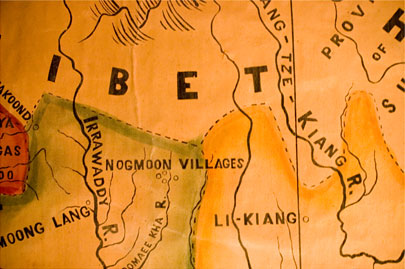
After so many years of tormenting me on the edges of my big map I will know you. My eye has found you on so many a night way up there perched above the French sounding Tati and the exotic Tali-Foo, on the edge of the edge of what was once known. Of course Nogmoon is not your real name, just the fantasy of some 19th century missionary, but a missionary with an ounce of humor. Humor enough to christen a dreary fly-blown city with an unpronounceable Mompa-language name Cuddleme, a name so appealing I spent 4 days and 4 nights trying to track it down only to arrive and be told the flies were "too heavy" and I must go to the next town to eat. Experiences in the equally prosaically named Busta and Jelii Jeli tells me you Nogmoon might be nothing, just another Chinese garrison on a dusty road to nowhere, but just maybe you are something amazing and so very soon, off I will go to uncover your secrets.
July 16, 2005
Tibet and back for less than $1000
In response to a couple of emails and a comment on the blog, here is my 2 cents on how to travel to Tibet cheaply:
1. Realize that Tibet is not just the Tibetan Autonomous Region, the Chinese designated Tibetan area on maps. Geographical, historical, cultural Tibet encompasses large swaths of what is now called Sichuan, Gansu, Yunnan, Qinhai, and Xinjiang. Travel in the Autonomous Region is heavily controlled by the Chinese government. Visas are expensive and there are lots of governmental hassles. Travel in the rest of Tibet does not require a visa and travel is unfettered by bureaucracy. As a side benefit, because of the way the lines are drawn on the map, as well as because of poor roads, high mountains, etc, tourists have largely ignored these areas.
2. Find a cheap round trip ticket to China. Generally the cheapest tickets are to Beijing/Shanghai/HongKong. This is your one big ticket item. But over the years I have always found cheap round trip tickets through diligence and planning ahead. Prices change daily sometimes hourly, so check often. Also try to travel in the off season. My current ticket was a little over $700 on China Air.
3. Get out of Beijing/Shanghai/HongKong ASAP. You can blow your whole budget in no time flat. If you must stay in one of these cities, stay with someone. There are thousands of Chinese bloggers to hook up with, travel exchange programs etc. There are cheapish hotels, but if you stay with someone most of your expenses will be taken care of.
Your destination from your point of entry will be Chengdu, Lanzhou, or Xining. These are the gateway cities.
Chinese trains are still ridiculously cheap. If you are buying train tickets and have trip of more than 9 hours go for the hard sleeper option, by far the best in the price to comfort ratio. Chinese Airfare is still super cheap. The nice thing about both planes and trains is that prices are fixed. Chinese airlines discount tickets as it gets closer to flight time if they have empty seats left. Chinese mass transit likes to be full. Don't bother getting tickets here. Get them there the day of or the day before departure.
When in one of these big cities check out the map room of the foreign language bookstores (usually hidden away upstairs). This is the best way to find maps with both Chinese characters and English translations. The bigger the map, the better. I usually buy one and cut it up. Most Western maps are terrible/inaccurate, but of all of them I've found Nelles Northern China/Southern China to be pretty good. The roads and cities are in the right place and the geographic info is useful. Still it is woefully incomplete. Chinese bus and train stations often have very good bus/train schedule booklets (with city maps). They are usually bound in blue or green and have pictures of buses and trains on the cover. Even though there is no English translation if you can match up characters they can be useful. In remote areas you won't have to worry about this. There is usually only one road, and schedules are clearly marked.
4. Once in Chengdu, Lanzhou, or Xining (these are also big cities with millions of people) head out by bus ASAP. Within one day of each of these cities, you will be in the mountains and immersed in Tibetan culture.
5. This is a map of some of my favorite bus routes. Note that each connection is generally 12-20 hours. Also most cities have 2 bus stations and many smaller independent private bus services. Even tiny cites often follow this rule.
By far the most popular route for backpackers is Chengdu-Songpan-Langmusi-Xiahe-Lanzhou and for good reason. Songpan is surrounded by National Parks and offers horse treks and camping. Langmusi is still a relatively unspoiled backpacker paradise and Xiahe is home to the Labrang monastery one of the biggest most active monasteries in all of Tibet. The popularity of this route is due to the Lonely Planet which many backpackers hold on to for dear life as they go through this area rarely venturing off the main road. But all the best places are off the main road. I recommend getting yourself a good map, ditching the LP, and just exploring. Feeling really adventurous. Just flag down a bus full of the most interesting looking Tibetans and go where they are going. This is easy if you follow my #1 travel rule which is to never take more than you can easily carry.
6. Once on the road your costs will be minimal. Even 20 hour bus trips are often only $5-20 and guest houses range from $2/night for a basic bed to $50/night in a place outfitted for Chinese tourists. I try to stick to the $2/night places. Food costs are negligible. In fact if you spend 2 months in Tibet traveling this way you'll generally spend much less than you would in say, New York City. Save money by traveling!
7. This is my plan for this trip (these plans always change on the road):
Chengdu
Chengdu-Kanding
Kanding-Lhagang-Manijiaguo
Manijiaguo-Litang
Litang-Nyarong-Kanze
Kanze-Pelyul
Pelyul-Katok-Dzongsar
Dzongsar-Pelpung-Derge
Derge-Manigango-Dzogchen
Dzogchen-Sershul
Sershul-Yushu
Yushu-Sershul-Zhechen
Zechen-Kanze
Kanze-Donggu-Serta
Serta-Serwa
Serwa-Baima
Baima-Jigzhi
Jigzhi (Drukcen Sumo)-Aba (Ngawa)
Aba-Longriba-Hongyuan
Hongyuan-Chengdu
If you are playing along on a map note that many of the cities have alternate spellings. Derge is Dege for example on many maps. Sershul is Serxu and so on. This is because there are Tibetan city names, Chinese city names and many alternate Romanizations.
People always ask about language issues, but these have never really been a problem. The further you get from "civilization" the more patient people will be with 'foreign devils'. That's about it, now you have no excuse not to hit the road. Many pictures from my previous trips can be found on my photoblog. I'll be posting images from my new trip there as well.
An account of one of my previous trips can be found here.
p.s. Many people don't feel like they've "done Tibet" (I hate the "doing" a country phrase by the way) unless they've visited Lhasa. I'm sad to inform you that Lhasa is Chinese Disneyland. The Potala Palace is a museum and this city is now majority Chinese. If you must go, the cheapest ways to get there are by bus from Golmud in Qinhai or via Zhongdian in Yunnan. Rules and regulation seem to change daily but both cities have backpacker friendly travel places that will arrange the permits.
July 11, 2005
How to Travel Well
2 Weeks. I'm counting off the days before I depart for Kham, the Litang Horse Festival. and beyond. I have a few private rules about "out there" travel, the first being that one should not take more than they can easily carry. This is a little list I wrote for myself long ago:
How to Prepare
1. One bag.
2. Bring a small book with photos from your life.
3. 2 places to hide money (I use a moneybelt and a pouch).
4. Cash converted to local currency.
5. Xerox all documents, credit cards ect.
6. Study the Lonely Planet (and other guide books), but leave them at home.
7. Bring a notebook, and use it.
8. Find the best map.
9. Take the smallest road.
10. Get lost (because this is where the journey begins)
What to do once you are there
1. Don't randomly stick a camera in people's faces. Slow down. Hang out. Take out your camera only when you are leaving.
2. Eat what local people eat, as long as it's hot.
3. Drink more water than you think you need, but make sure it is well purified (I use idodine).
4. Travel using local trains and buses.
5. Avoid places with English menus unless you are in England.
6. Wander around at night (only then can you guarantee anonymity).
7. Even if you can't speak the language you can always talk to people via sign language and patience. If you can't communicate at the very least smile.
8. Ask questions.
9. Don't complain about: bathrooms, hotels, food, buses, etc
10. Go someplace that scares you a little.
February 27, 2005
a collection of video stills:
from my cross country trip last summer:
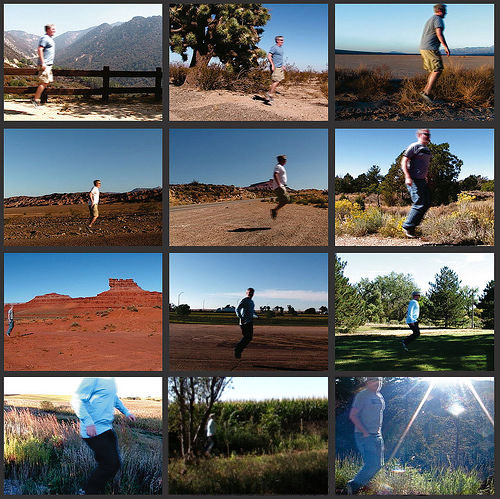
February 25, 2005
Valley of the Gods
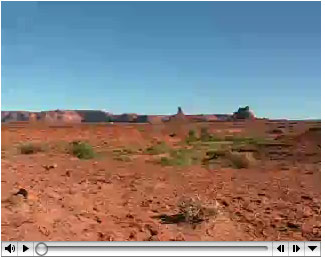
If you enjoyed that one, you should probably check out this one too.
February 4, 2005
river of sleep
I was looking through some old journals this evening in an attempt to date photos I am scanning and ran into some pages I didn't remember writing.
Here's a bit that jumped out at me. It was written in a Tibetan guesthouse high on the plateau. The year was 1999:
4/30 - Last night I heard howling dogs, screaming hawks and a strange low moan that might have been human, but was not. From my high window, I could see the dark shadows of hawks circling overhead against a tremendous canopy of stars. In my dream I had seen lightning leaping across the sky. A bolt struck the moon and it fell, crashing with the sound of a falling chandelier. The broken pieces scattered in the soft earth flickering out with long angry hisses. My eyes adjust. Without the moon even more stars lit the sky, but they too began falling, one by one with whispered sighs until the world was inky black. A paralyzing fear overwhelmed me until, in this absolute night, swooped creatures bristling with electricity gliding out of reach on great gossamer wings. Looking, while comforting, hurt my eyes so I closed them and drifted quickly, silently away from this cold place and back into the warm river of sleep.
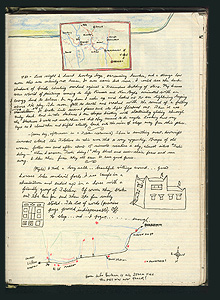
November 9, 2004
Visa mig på kartan var jag är
A Swedish man wrote in today and asked me today if I had any images of holy places in Amdo. The simple answer is yes of course, I have lots of images of monasteries, temples, and specific holy sites around the region, but the truer answer is that people who live there have a very broad sense of what is a holy place. This is one of the most isolated corners of Tibet. There are large swaths of unbroken plateau. Nomads tend to move around in small family groups gathering together only occasionally for festivals and trade. There are cities, but these are few and far between. Up in the mountains you will still find pockets of pre-Buddhist animists (the Bon). For the nomads who live in a world of such utter emptiness, the mountains, the rivers, the grass, the wind, and even the yaks all have some spiritual significance. For the most part these are not literate people... their faith is expressed simply and organically. A man on horseback will remove his hat when crossing a pass even when he is alone. Women will often circle a spring before collecting water. Children will often say a small prayer before venturing into a cave. In the mountains the traveler will encounter mounds of stones arranged into stupas often near key geological or natural features. This might not sound like much but if you have been walking for hours over featureless brown plains, seeing that simple marker near a patch of wildflowers can be a profound experience. Caves and springs are often marked with bits of cloth. Praying is expressed by circumambulating whether it be a stone stupa, a cave, or an entire mountain. So the holy sites often look like nothing special in pictures, a pass marked by rocks, a slight trickle of water — the mouth of a stream, or a small patch of hillside
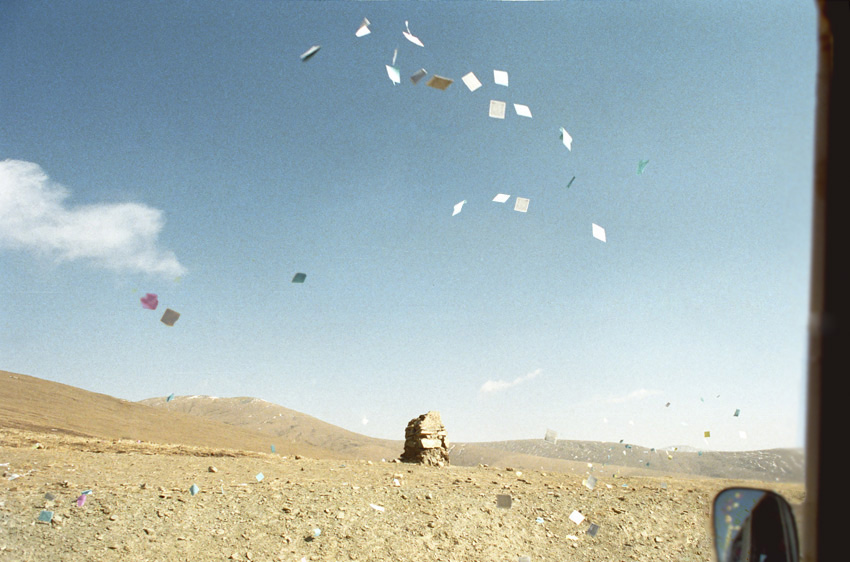
People ask why I keep going back... hard to say exactly, but perhaps this slightly bastardized quote from H.G. Wells explains something of it:
"Most people in this world seem to live "in character"; they have a beginning, a middle and an end... They have a class, they have a place, they know what is becoming in them. But there is also another kind of life that is not so much living as a miscellaneous tasting of life. One gets hit by some unusual transverse force, one is jerked out of one's stratum and lives crosswise for the rest of the time"
May 18, 1999
Luhuo to Xiahe - Part III
LUHUO (Zhaggo)
I arrived in Luhuo at around noon. It's a logging/industrial town with none of the charm of Ganze (it's much more Han in character). I wanted to leave for Barkam as quickly as possible, but I soon discovered that people in Luhuo rarely travel to Barkam. The next bus was nine days away and the lowest price I could get for a car was an outrageous 2400 quai.
I decided to try to hitch so I went to a bridge where the road left the town and waited. Groups of young boys surrounded me to practice their English skills (Hello! Hello! Fuck you!). Groups of old men surrounded me and pulled on my beard. Groups of young girls surrounded me and giggled. After several unfruitful hours of waiting, being mocked, and getting sunburned, I was about to give up. Not a single car passed going in my direction. Just when I was ready to break, a wealthy Tibetan invited me to his home to eat. He and his daughter had been watching me quietly for over an hour.
His wife cooked us a big dinner and he promised to help. He said he would drive me as far as was possible and then I could walk from there. The next day we departed in his truck. Very quickly I learned why people in Luhou don't travel to Barkam - the road which on the map looks like any other road, is just a logging path. The snow melt had eaten away large sections of this path and at times it just vanished. The truck overheated about every 20 minutes and we kept having to find river water to cool everything down. We also sprung a major oil leak. As access to the engine was through my seat I was covered with oil almost immediately. We went as far as we could (about 2 hours) and then he dropped me off and wished me luck. He told me I was lucky not to have taken another car, because they would have just robbed me anyway. This was a nice bit of advice to ponder as I began walking in the forest.
I walked all day, through the forest and over a pass onto the plateau. Then I descended into another forest where I met some loggers who offered to take me to the next town... a place called Serba. The road began to improve and soon we began passing lots of small settlements.
SERBA
Serba is a dream village although when approaching you might feel as if you are in a nightmare. Dead dogs hung by the neck are posted on trees in a large circle around the village. This is supposed to scare away the packs of vicious dogs that roam the forest.
The village itself is a collection of giant stone homes clustered in an idyllic valley. There is no guest house, but the owner of the restaurant will let you sleep on the table. At night everyone in town will come around to check you out. Singing is encouraged, even insisted upon. After being sung a song about a man who goes to look for his horse in the mountains, a large Tibetan demanded I sing a song in return. Not being much of a singer all I could offer was the theme song to Gilligan's Island. I tried to explain it as follows "This is the song of a man who finds himself on an island far from the world he knew before. Luckily is not alone, his friends make the stay bearable. They create paradise on the island."
The road from Serba to Markam is dark and shaded. There are many side roads so always be sure you know where you're going when you get to a fork in the road (there are many). It is easy to get lost.
There are many logging lodges (almost always friendly)… eventually the road improves, becomes paved, and you'll see a steady stream of trucks going your way. None of these lodges requires any of the usual PSB paperwork. All are dirt cheap. Plan on sharing a room. At night these lodges fill up with loggers who sit around telling stories, drinking beer, and watching videos. At night you will share a room. The lodges are made of wood and straw but often use coal stoves for heat (fueled by burning lumps of coal) and candles for light. The drivers also always smoke in bed. Before going to sleep always memorize the exits in case of fire which is a very real possibility.
The closer you get to Markam, the bigger the river and the bigger the Tibetan homes. Once you get within 40km of Markam you'll pass an area with 10 story high stone towers. The entire area is dramatic and worth exploring.
MARKAM (Barkam)
Markam is the type of city many people imagine they'll find in China when they know nothing of China - exotic, colorful and fun. The city has at least doubled in size since my last visit in 1992 but even the addition of blue glass and white tiled buildings doesn't diminish the charm of this place. Despite its growth Markam is still relatively compact and easy to cover by foot. You'll find few cars, lots of cyclos, and a good mix of Tibetans, Han, Muslims, and a smattering other minorities. In the surrounding hills (20 minutes walking in either direction) you'll find fantastic examples of large scale Tibetan stone architecture. There are no sites as such, but you'll not run out of things to see.
There are two major hotels (both over-priced but comfortable), and a couple of trucker-type guest houses.
In a city the size of Markam, you would think you could change money, but it is indeed impossible. I tried everywhere. Most people have never even seen western money and wouldn't know what to do with it if they had it.
Note the bookstore is a fantastic source for propaganda posters.
Four different companies run buses in and out of Markam. If the city you want to go to is connected by road - you can probably get there. Busses leave for Lanzhou (2 days), Chengdu (2 days), Kunming (5 days), Hongyuan (1 day), Zoige (1 day), Kanding (2 days), Litang (2 days) and probably lots of other places. You must show travelers insurance or else you will be forced to pay double or triple.
I was headed to Hongyuan - I went by minibus.
The road to Hongyuan rises rapidly. A few hours out of Barkam the trees thin out, you'll cross a pass, and be back on the Tibetan plateau. The temperature will drop dramatically. I have done this trip 4 times during various months and each time we have run into a snowstorm. This trip was no exception. On the mountain there were near blizzard conditions (the hole in the roof of the bus meant that it the blizzard was also inside the bus). The snow stopped as quickly as it started and a few hours later we were in strong (but cold) sunshine.
HONGYUAN
This is one of my favorite out-there villages. It is a Tibetan cowboy town with rows of pool tables in the streets and guys on horses with guns strapped to their backs wandering around. You will be the center of attention wherever you go.
Several big Tibetan schools are located here and many of the students will offer to take you to their grasslands. If you get the offer - go.
To get to the guest house walk out of the bus station and turn right. It's at the road junction near the school.
TENGOR
This city is even wilder than Hongyuan. Everyone rides around on horseback or on motorcycle. If you want to see/hang out with horseman, this is the place. The city is very small (you can basically see everything from where the bus stops). The guest house is across the square. Use the bathroom at your own risk.
ZOIGE
Zoige has grown up in the last few years. The first time I visited, it looked much like Hongyuan does today, but now someone is pumping money into the place. The long lines of wooden yellow stalls are being replaced by white-tiled, blue glassed concrete stores. Local youths fool around on PCs and the cops drive dark windowed SUVs. Still some things stay the same. The government guest house is there as it always, falling apart piece by piece and slowly being covered by layers of soot and filth. Long lines of Tibetans visit the monastery every day (the monastery is newly constructed)… and the PLA marches up and down the streets harassing whoever gets in their way.
The PSB office is interesting if only for its Stalin poster.
The lonely planet mentions a new hotel but it was shuttered when I was there (April).
While there is no official money exchange, the guys in the post office will eagerly change dollars (at a terrible rate).
Note: there are two bus stations. Guide books sometimes refer to the main station, but neither station is the main station (or maybe they both are). If you can't find a bus going your way at one station, just try the other.
Hitching is easy here.
LAMUSI
The minibus from Zoige to Lamusi is almost always an experience. Count on getting up close and personal with lots of Tibetans.
Lamusi is one of the most fun monastery towns in China, don't miss it. Probably the most unusual aspect of the town is the casual way in which monks do sky burials. I was allowed to follow and watch. Unlike the other burial I attended this one almost jolly. The man was a drunk one monk told me. Not a good man.
XIAHE
Much has been written about Xiahe elsewhere so I won't waste your time, but note that if the lovely Tara guesthouse mentioned in the LP is full, you should try the "Tibetan guesthouse" a few doors down. It is equally Tibetan and equally comfortable. The Tara was in the process of adding showers when I was there. They should be done by now.
Also if at all possible visit Xiahe on a festival day. This is probably the best place in the PRC to see unfettered Tibetan religious displays.
From Xiahe I continued on to Linxia, Lanzhou, and then to Beijing. But those places probably won't interest the intrepid folk on this list so I'll shut up now.
May 12, 1999
Xining to Maduo - Part II
My bus from Xining left the station at 11AM, but we didn't actually leave the city limits until 1PM (we ended up going to another bus station and changing busses). Even though we were on our way to a heavily Tibetan area most of the people on the bus were Han Chinese. Everyone seemed surprised when I told them I was going to Maduo. "Be careful," I was told, "Danger."
The road was relatively featureless, with low slung hills and endless plains (looks like the road from Golmud to Lhasa). We lunched in a place I couldn't find on the map-it was a typical Qinhai bus station without much of a town attached. After this place the there was very little in the way of human habitation.
It was very cold on the bus. My water bottle froze solid.
At around midnight the bus stopped and I was told we were at Maduo. It was pitch black and I was the only person to step off the crowded bus. As the driver pulled away I could hear several people laughing at me. I could hear the sounds of dogs barking, but I couldn't see them. I could hear yaks but I couldn't see them either. In fact, I couldn't see anything - it was like being in a cave. It was one of those travel moments when you wonder what the hell you are doing and what has gone wrong in your life such that you are in your present situation. I find the best thing to do at these moments is to just to laugh and start walking... so I did.
Eventually some starlight broke through the clouds and I could just make out some sort of settlement a few hundred meters down the road - Maduo. All the lights were off. I just knocked at the first place I came to. It, like almost every place in this one horse town, was a restaurant/truck stop.
I was led to a very cold room that was already occupied by two snoring drunken truck drivers. There was no electricity and the window next to my bed was broken. I slept with all my clothes on underneath three straw filled comforters. When I woke up I discovered my toothpaste had frozen rock solid. The bed (and breakfast) cost me 9 yuan (Breakfast was a spicy noodle soup). I shared the outhouse with a hairy pig.
MADUO
The city is not really a city, just two rows of truck stops on either side of the road. I doubt more than 50 people live there. The best restaurant is the Muslim one. The friendliest place to sleep is the Tibetan house. The best place to buy stuff is the Chinese shop. There is no regularly scheduled bus and nobody (except truck drivers) stops here on purpose. The only way out of town is to hitch, but the local PSB guy doesn't allow hitching. This is how to escape (if you are going to Yushu).
1. Eat breakfast and hang out until 9 or 10 (before that it is too cold and nothing is happening anyway).
2. Walk out of town (South) and take the left fork in the road.
3. Keep walking until you can't see the town (and they can't see you).
4. Flag down any moving vehicle. Be prepared to wait and carry rocks for the wild dogs. You shouldn't pay more than 40 quai to get to Yushu. Most drivers will take you for the company.
Note: Most drivers who stop in town, stop to eat. If you want to risk negotiating with them in town, do it after they are finished their meal right before they hop on their trucks, otherwise the PSB guy will nix your plans.
Once you leave Maduo you pass a glassy lake and the scenery finally starts to become Tibetan. The land is more contoured, large herds of yaks roam the land, and prayer flags dot the desolate landscape.
BAYAN HAR SHANKOU (name on Chinese maps - not the real name)
This town is greatthe first really Tibetan place you'll encounter. When I arrived I ran into a procession of monks who were carrying a young Lama to the monastery. It only got better from there… a beautiful little monastery. Lots of rug filled yurts... Tibetan dancing and music at night.
There are several Tibetan places to stay, but the PSB will force you to stay in the dumpy Chinese restaurant/truck stop. While this was annoying, the PSB was otherwise helpful. They found a mail truck for me and insisted I go to Yushu. Leaving this town, the scenery finally becomes mountainous.
ZHUBGXUGDIN (name on Chinese maps - not the real name)
Is another fairly wild Tibetan village on the plateau side of the mountains. Most of the people get around on yaks. I stayed in a tent a few kilometers outside of town. My memory of the place is clouded by the vast quantities of bai-ju I was forced to drink. Avoid the stuff (sorghum based fire water) if at all possible.
The March winds here are amazing-feels like knives. Bring WARM clothes.
Right out of town the road starts climbing (The path is not particularly steep or troublesome). Eventually you will cross a pass and see signs for Yushu (which is always pronounced Yishu). Soon after, you will rapidly descend into a river valley (about 100km long). The entire valley is wonderful and worth spending lots of time exploring. Along the valley to Yushu you will encounter several Tibetan mountain villages, each with it's own monastery. There are long lines of stupas, fantastic hanging bridges, and plenty of friendly Tibetans to guide you along the way. The most interesting town is called Xiewu. It's about halfway to Yushu. Note that if you were to travel direct from Maduo, the whole trip would take 6-9 hours depending on your vehicle.
Note: This is a great place to trek.
JIEGU (YUSHU on Chinese maps) (mainly pronounced YISHU)
Jiegu is a dusty rough and tumble Tibetan city. Compared to everything else on the road from Xining it's a metropolis, but compared to most cities in China it is tiny. If you arrive from the direction of Xiewu the first thing you'll see is the square with masses of Tibetans milling about (there are few cars, so everyone walks. There is not much to do, so people just hang out). The road branches into a 'V' shape. On the left branch you can find the Tibetan market, the bus station, and several guest houses. On the right branch you'll find a hotel, the post office and the PSB.
The main monastery is in the hills visible from just about everywhere in town. Some traditional homes sport small 2 or 3 monk monasteries Listen for the drums and the horns and poke your head in. Before you enter, check for dogs. I almost broke my neck as I fell down some stairs running from a dog when I entered one of these home monasteries unannounced.
The main Hotel is a run-down mess run by a couple of teenage girls. Avoid the bathrooms at all cost-better to just go in the hills. The Tibetan guest houses are a much better deal.
Throughout the town you will be accosted by beggars. Many of the young monk beggars are very aggressive. Legitimate monks suggested these kids just wear monks robes. Either way, you should be prepared - you will be touched and grabbed and they will try to steal anything you put down.
If you want to post letters here, you'll have to deal with some of the grumpiest postal workers anywhere. They are more likely to send your letter if you buy an airmail envelope from them. Also they will not send a letter without a local return address-just make one up. Be persistent and don't accept their hostility, eventually they will take your letter.
There is no real reason to go to the PSB, but they are a surprisingly friendly and helpful group of fellows (no English spoken) completely unlike most PSB officers I've encountered. They offered to give me permits that would get me down to Yunnan (for a small fee). I didn't ask about Lhasa, but the people at the bus station did offer me Lhasa tickets. Either of these options would have been great if I were going to those places, but I was headed to Serxu in Sichuan…
Getting to Sichuan looks easy enough on the map, but everyone in Yushu looked at me like I was going to Mars when I asked. There is no bus service from Yushu, but as always there is a way.
Here's how to do it:
First you have to get yourself back to Xiewu. To get there, you can:
a) Walk - it's a couple of hours
b) Take the bus. (not a bad option but it arrives too late in the day to be useful)
c) Wake up early (between 7-8am) and go to the square. On the road to Xiewu there will be a bunch of guys in vans and trucks waiting to take people to Xiewu. It should cost 7-10 yuan. Once you get to Xiewu go to the dirt road at the bridge (there's only one). Again guys will eventually show up there in vans and tractors (around 11-12am). It's an all-day journey to Serxu.
Remember to stock up on supplies. Yushu is the last major stop on the road in every direction.
XIEWU
This is a wonderful place. The hills are full of monasteries big and small. Everyone is friendly and they make good yak stews at both restaurants.
The tractor ride to Serxu is amazing - it's a dirt path that goes up some nice, steep, rolling hills. Along the way you pass lots of yak herders in brown tents. Eventually you'll get up past the snow line and cross a pass or two.
Note: This is the proper way to cross a pass when you are with a bunch of Tibetans.
1. Remove your hat.
2. Throw prayer slips out the window.
3. Shout for joy.
There are two major villages on the way to Serxu. Both are fantastically wild 100% Tibetan places. My mere presence caused near riots with people crowding and fighting to get a look at the hairy foreigner. Both places were over-run with feral dogs (literally hundreds of dogs) and seemed to be totally cut off from the outside world. There were no guest houses as far as I could tell, but everyone is happy to take you in. Just be prepared to be groped and prodded. Also be prepared to drink enormous quantities of yak butter tea.
SERXU
Serxu is a quieter, gentler more urbane version of Yushu. It's high up on the plateau - cold and sort of empty looking. The hotel was decked out for Chinese big-wigs and was surprisingly comfortable. The bus station is about 200 yards east of the hotel on the other side of the street. This is the end of the line for the Sichuan buses so you can only go in one direction (towards Kanding). I bought a ticket to Maniganggo. The bus leaves early (5:30). Upon arriving I was shocked to find the rarest of all Chinese rarities - an almost empty bus. The complete passenger list was as follows:
The driver
his assistant (a.k.a. the bus troll)
me
two sleepy monks
an old man with bleeding gums
a baby yak (who threw up several times before we even got going)
Leaving Serxu you cross the plateau and quickly start climbing into some high mountains on a V E R Y bad road. I've traveled the Karakoram highway, the road from Manali to Leh, and the road from Chengdu to Lhasa, but this is the worst road (path) I've ever encountered. It was alternately covered with ice, rushing water, and large boulders. Steep deadly drop-offs were the norm. At times the road was just completely eaten away and the driver would make a new path… It was bad. The driver, always focused, did a fantastic job although he did not help calm my nerves. He tended to shut the engine off and coast (at high speed) whenever possible. Also he and his assistant drank beers the entire way.
ZOGQEN
This is not a place you want to stop. If you get off the bus, remember-I told you so.
MANIGANGGO
Everyone in town basically works at the truck stop which is set in a pretty alpine valley. This is a nice place to go hiking. The truck stop/store/restaurant/hotel is a good place to stay although there is nothing in particular to do.
The next valley over is covered with pines. Then you descent into the Ganze valley. There you will see a very different type of architecture (large adobe structures painted with wide vertical stripes) and some impressive monasteries.
Note: The Ganze valley is much lower than Serxu. The temperature will probably rise dramatically. In my case there was a 50 degree (F) difference in temp from morning to night.
The most beautiful monastery is 40-60K north of Ganze (you pass it on the way in). It's near the smaller monastery you'll see on an island in the river.
GANZE (Garze)
Ganze is a big bustling prosperous Tibetan town. It's a good place to stock up on Tibetan goods (please don't buy any of the leopard skins for sale almost everywhere). If you arrive by bus, you'll be greeted by motorcycle rickshaws who will offer to take you to the hotel. The hotel is uphill and a fair distance from the bus station so this might be a good idea. The hotel is wildly overpriced, but it is the only place to stay (there were plenty of other hotels but they were all off-limits - the PSB has put the fear of god into the owners).
Ganze does lots of trade with India and some of the young people here have studied there and speak British accented English. Also you are closer to Mandalay than to Beijing - hence the curries.
I saw two knife fights, but I don't think that was normal.
Buses headed towards Kanding leave very early. A few miles out of town you'll hit a roadblock and there the bus will be stopped. The authorities at this roadblock are unpleasant and caused lots of problems for the Tibetan passengers on the bus. I wasn't exactly sure what was going on, but from my perspective it looked like good old fashioned harassment/bribery. Many people had to unload/unpack. Although I got some suspicious looks and my bag got poked, I was passed over.
From Ganze all the way to Luhou you will can see the devastating effects of large scale logging. Sometimes, when the bus is high on a hill you can see clear-cutting as far as the eye can see. Only a thin strip of trees along the roadway remains.
May 1, 1999
Urumuchi to Xining - Part I
A few weeks ago I returned to Los Angeles from a two month China trip. Enclosed are some disjointed notes. My trip covered a large swath of western China. Most of the notes are brief-- especially for the well traveled areas. I tried to add a little more detail about places off the beaten track… I apologize for my dodgy spelling/grammar in advance.
URUMCHI
I arrived late in heavy snow. For once the city looked beautiful, but by the next morning the coal fueled grime had returned… I was awakened by the sound of thousands of "recruited" streetworkers breaking the ice and snow with pickaxes. This started at 5:30am and continued for several hours.
While the city was cleared of snow, all the roads to the mountains were impassible so my Tian Shan plans were nixed (this was early March). John's Information Cafe and the infamous Hongshan conference room were both closed (the rest of the Hongshan was open--but why pay 40 quai for an uncomfortable bed and horrific bathrooms).
I stayed at the Electric Power Hotel which I recommend.
Can't say I did much in Urumuchi. It was freezing and dirty. Mainly I hung out in Muslim markets and shopped for propaganda posters.
If you feel like splurging try the breakfast at the Holiday Inn. It is excellent (prepared by a friendly French chef). Several years ago I was one of the restaurant's first customers. Back then all the waitresses would nervously cluster around hanging on your every word. They always wore smiles, but looked terrified nonetheless. One of those waitresses who is now a manager told me she was indeed terrified. When the restaurant opened the kitchen was run by a German who would hit the girls with chopsticks and make them apologize for "mistakes" by writing apologies for each offense 3000 times over. The current French chef, an unusually thin man from Lyon, is considerably more laid back.
The bar at the Holiday Inn often sports a seedy pickup scene between foreign oil men and local working girls. During off hours the girls will challenge you to spirited games of Go (they always win).
ROAD TO KASHGAR
While this road is heavily touristed during the summer months, it is virtually devoid of Western and Japanese tourists in winter and early spring. The "hello factor" was almost 100%.
Korla and Aksu seemed markedly more Chinese than in the past (more bathroom tiled buildings, more blue-mirrored glass, more Mandarin signs).
The road (and the busses) were much improved from my previous trips.
One tip (to be followed anywhere you go in the world): Don't play 3 card monty.
KASHGAR
As far as I could tell I was the only Western foreigner in Kashgar in early March… All the backpacker cafes were closed, most of the hotels were absolutely empty, and the PSB was nowhere to be seen---in short, March is a great time to visit. Studying the dusty Seman hotel guest book confirms that off-season visitors are few and far between.
Note the rail line from Urumuchi is expected to be finished by the end of the summer.
I was shocked by the changes since my last trips in 89 and 93. Large areas of the city have been made to look typically Han (with wide straight roads, ugly concrete buildings). The population also seems to have become more Han. A school teacher told me, "We Chinese are 40% of Kashgar. After the train comes, we will be 90%." The teacher went on to extol the virtues of the new Kashgar.
Many Kashgaris see the situation through a different lens. Several people told me, "When the train comes, Kashgar will be finished." Some talked darkly of bombings. Many also complained of new strict regulations which prohibit boys under the age of 18 from entering mosques. Young men deemed "too religious" are routinely hauled away to jail. Another source of resentment is a sort of class system that gives preference to Han businesses.
The center of the city and the outskirts retain the traditional Kashgari architecture, but signs of modernity are creeping in. For example, a number of the mudbrick homes I visited sported VCDs and elaborate stereo systems (The Braveheart VCD is a fav - the Kashgaris see the film as analogous to their situation). Pagers are common, but in general, only Chinese, own mobile phones.
Taxis are omnipresent. For long trips out of town the going rate is 1 quai per kilometer (if you get dropped off, you have to pay for the return mileage).
If you need help and are looking for a Kashgari who speaks English, go to the Seman Hotel II (across the square from the main Seman Hotel) and ask for Abdul Qayyum. Abdul is a completely stand-up guy who will help you with all sorts of problems. If you hang out with him, be sure to give my best to his family (his mother makes a mean noodle soup).
On market day (you will stay for market day won't you?) be sure to check out the medicine men who hang out near the rug pavilion
A last note about Kashgar: as always there are interesting intrigues going on. At the Seman I met an Uzbek girl who was being held as collateral on a business deal (her brother-in-law had borrowed money from a Kashgari). This poor creature's husband had originally been left as the collateral, but when he realized that his brother had vanished with the money, he brought his wife in to take his place (without her consent of course). She was forced pay off the debt by prostituting herself to Pakistani traders. The total sum of the remaining debt: 2200 quai. She had been in Kashgar for 9 months and wasn't expected to survive the year it would take to pay the rest of the money. I helped her get to the border by paying off the moneylender. As she left she promised to "stab her husband in the eyes." Later, the Kashgari moneylender just laughed at me. "There are many sad stories," he said, would you like me to tell you another?"
ROAD TO HOTAN
The road to Hotan, in my opinion, is much more interesting than the northern Taklimakan road. Although the cities along the way have been thoroughly Chineseified, they retain a strong Uigher character; the desert is beautiful (if you are into nothingness); there isn't much bureaucracy to deal with; and everyone just seems really happy to meet you.
I particularly enjoyed hanging out Kargalik and Karakax. Both places seem to be very far away from anything and a good place to do Uigher type things. I learned to kill a goat with a pocket knife for example. Accommodation is simple but not uncomfortable.
Forget about bathing.
HOTAN
Arriving in Hotan was a real letdown after Karakax. I expected something that looked a bit more "out there". At first glance the city appeared to be yet another bathroom tiled military outpost, but after a few days of poking around, I began to come around - the secret...wandering outside the city limits.
My recommendations:
1. The market-- busy and bustling every day of the week, but huge on Sundays.
2. Country roads… Just head out of the city in any direction along the dirt popular lined roads-- you're bound to have an adventure.
3. Schools. Poke your head in… the kids will drag you to class.
4. The airport (even if you're not flying). The military does live fire exercises around the airport. If you're lucky they'll let you fire an AK 47 or launch an anti-tank grenade. At the airport I also met a very lonely air traffic controller (there is only one plane per day). He loves reading/discussing Mark Twain. Look him up.
ROAD TO GOLMUD
The road to Golmud is rough and mainly boring. It's dusty and s l o w. Along the way you'll encounter over-friendly Uighurs, comically hostile Chinese officials, and some of the most stir-crazy with boredom truck drivers you'd ever want to meet. Bus service is scattered or nonexistent.. count on hitching and waiting.
My stops were Keriya-Niya-Qarqan-Qarkilik-Youshashan-Da Qaidam-Golmud. The journey took 8 days and it was remarkable only for its monotony. The thought that kept running through my head was, "How in the world do these poor bastards survive here?" Every day was play-it-by ear. When you are hitching it is often best to do as the truckdriver does. For example, if he sleeps in his truck, you sleep in his truck; if he says eat, eat. They usually know best. And don't complain, remember...if you are there it's by choice.
Once you leave Xinjiang the towns (if you can call them that), become particularly depressing. I began to think of them as open air prisons which is probably not far from the truth. There was lots of talk of a big gold mine and untold riches, but I saw no evidence of wealth anywhere.
The main problem besides finding a ride (the trucks that ply these routes are almost always full of rocks/dirt/metal/or people) is knowing exactly where you are. Most of these places seem to go by different names on different maps. Bring a compass.
Note: About 8 hours out of Youshashan you'll come to a fork in the road. Both roads go to Golmud. Although the more southerly fork appears to be more direct (going through Ganq), go north. The road to Ganq eventually vanishes into nothingness… and the one truck driver I met told me the people there had stolen his golden teeth. He was indeed missing quite a few.
Also once you get into the Altun Shan range it gets really really cold---like "spit and it freezes cold". Go prepared. Arriving in Golmud to a real bed and a clean room was almost a spiritual experience.
GOLMUD
Many people knock Golmud, but I love it. In March it is cold and windblown. I had a friendly night of beer drinking with the PSB. When I asked about their Tibet ticket scam the English speaker said, "Well you know we have to make a living." He drove me back to the hotel in his spanking new SUV.
TRAIN TO XINING
The bus might be more interesting, but this a highly pleasant way to get to Xining. I slept most of the way.
Note: both the Golmud and Xining train station are prime examples of Russian-style Chinese architecture.
XINING
None of the guidebooks I consulted before my trip were up-to-date regarding Xining hotels. I couldn't even find most of the hotels mentioned in the Lonely Planet. Because I arrived in the middle of the freezing night, this was bad.
I ended up staying at the "The Xinjiang Railway Hotel". If you show up under similar circumstances, don't bother with the guidebooks, instead walk a few blocks to the east of the station and look for the hotel-like building on the north side of the street (no English sign) and beg for a room.
Xining has doubled or tripled in size since my last visit. I found almost nothing familiar so I quickly escaped to Kunbum. There are many buses direct to the monastery contrary to what the guidebooks say. To get them, just go by the sports stadium and get on a bus going to Taer (the Chinese name for Kunbum).
At the monastery you can stay in the simple Kunbum Monastery Motel. It's cheap and relatively clean. The bathrooms were stinky but much better than anything on the Xinjiang-Golmud road so I was happy.
Kunbum is best seen early in the morning or at night (before and after the Chinese tourists take over the place). Only at these times does it seem like a real monastery and not a Chinese Disneyland. Several monks are learning English and will be happy to show you around (they will find you). Despite the guidebook warnings that the monks are anti-photography, many will encourage you to take pictures inside the monasteries when you are hanging out one-on-one. I was told the anti-camera policy was mainly geared towards Chinese and foreign tour groups who don't show the place or the monks the proper respect.
